Stuttgart has a lot to offer. But despite fantastic vineyards and Swabian cuisine, world-famous companies such as Daimler, Bosch or Porsche; despite one of the largest MTB communities in Germany, and despite trails leading into the middle of the city, “Stuggi” has an image problem. Is it deserved? We found out from the locals.
What is the E-MOUNTAINBIKE City Escape series?
With the E-MOUNTAINBIKE City Escapes powered by Haibike we visit the world’s most exciting cities to bring you inspiration, insider info and the best tips and tours of the respective cities. Our goal is to offer inspiration for a new generation of riders and a new lifestyle together with Haibike. We open up new perspectives and show you exciting ways to experience the world’s metropolises – whether you’re a tourist or a local!
Each E-MOUNTAINBIKE City Escape Guide aims to inspire in its own way. Get to know new facets of the world’s metropolises, interesting locals and the best insider tips: local slang, dos and don’ts, cafés, bars, restaurants and bike shops. As part of every City Escape, we also present the bikes that we used to explore the urban jungle.
Looking to take an alternative tour of Paris, Barcelona, Zurich, Vienna, Lisbon, Frankfurt, Rome or Berlin? Click here to find our previous E-MOUNTAINBIKE City Escapes featuring a ton of insider tips, trail action and insights into each metropolis.
Enjoy the following 6 parts:
- 1/6 Motor City Stuttgart … has a bit of everything!
- 2/6 Where do you start, where do you stop? – If there’s one thing Stuttgart isn’t stingy with, it’s trails.
- 3/6 HP – It’s not where you are, it’s what you do!
- 4/6 Let’s roll! Stuttgarters don’t just love cars.
- 5/6 Escape essentials – Hotels, bars, restaurants, dos and don’ts in Stuttgart
- 6/6 Escape faster – Our Stuttgart rides in detail
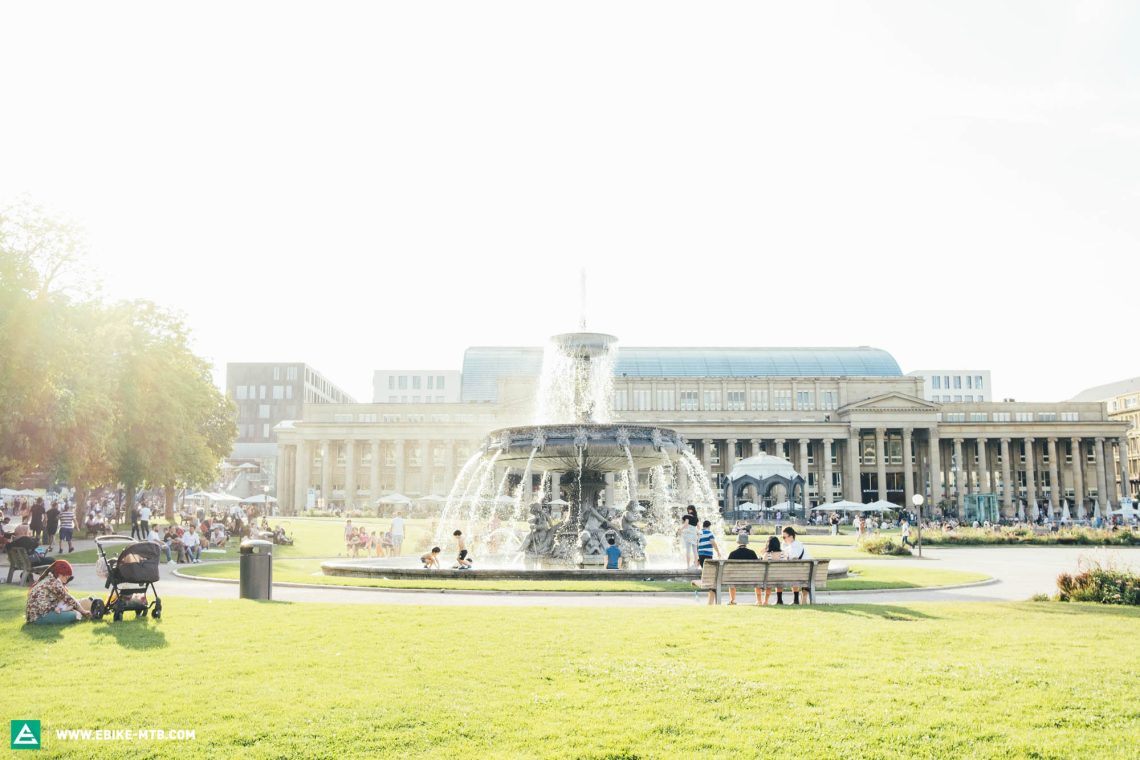
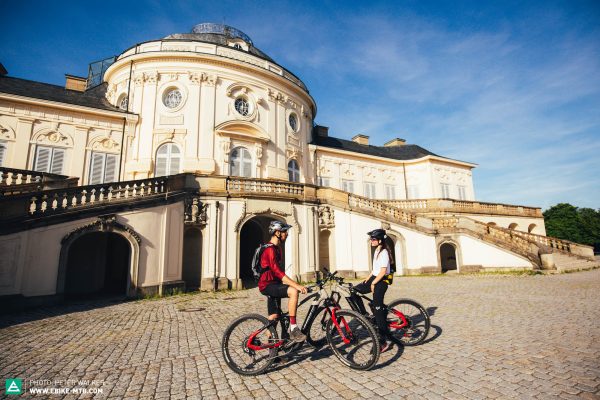



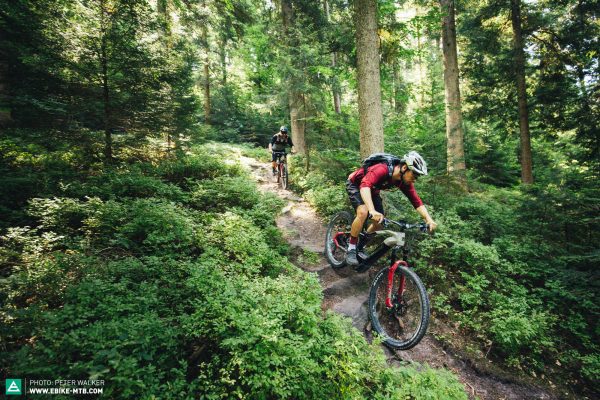

1/6 Motor City Stuttgart
… has a bit of everything!
We could think of countless reasons not to portray the capital city of Baden-Württemberg. Its reputation of being indifferent and stuffy often precedes the city unchecked. But after being surprised negatively by some overhyped cities and positively by others during previous City Escapes, we wanted to give Stuttgart a chance and put our biases aside. Since our HQ is quite close to the city and most of our staff have lived here for years, we let our art director Julian fly in from abroad to explore the city from a neutral perspective.

Closed in and cool about it
Closed in by picturesque landscapes, Germany’s sixth largest city is gently nestled between green belts and vineyards. Unusual for large cities, Stuttgart’s urban landscape spans an altitude difference of almost 350 m. Some say it reminds them of San Francisco with all its ups and downs. Dotted across it are modest houses and steps, laboriously making their way up the hillsides. Museums, distinguished squares, parks and restored palaces from the 18th century line the city centre. The cityscape is dominated by bold post-war architecture, like the 217 metre high television tower (the world’s first made of concrete, by the way) as well as cars from Porsche and Mercedes.
With around 600,000 residents, the city seems more like a village, almost idyllic with its hills, squares and many green areas. There’s none of that anonymous city feeling here! It doesn’t have a charming old town to contrast the modern, either. It was completely bombed to ruins by 53 air raids during the Second World War. Today, you can enjoy the view and commemorate the victims from Monte Scherbelino, a mountain of fragments of the old town. But more on that later!
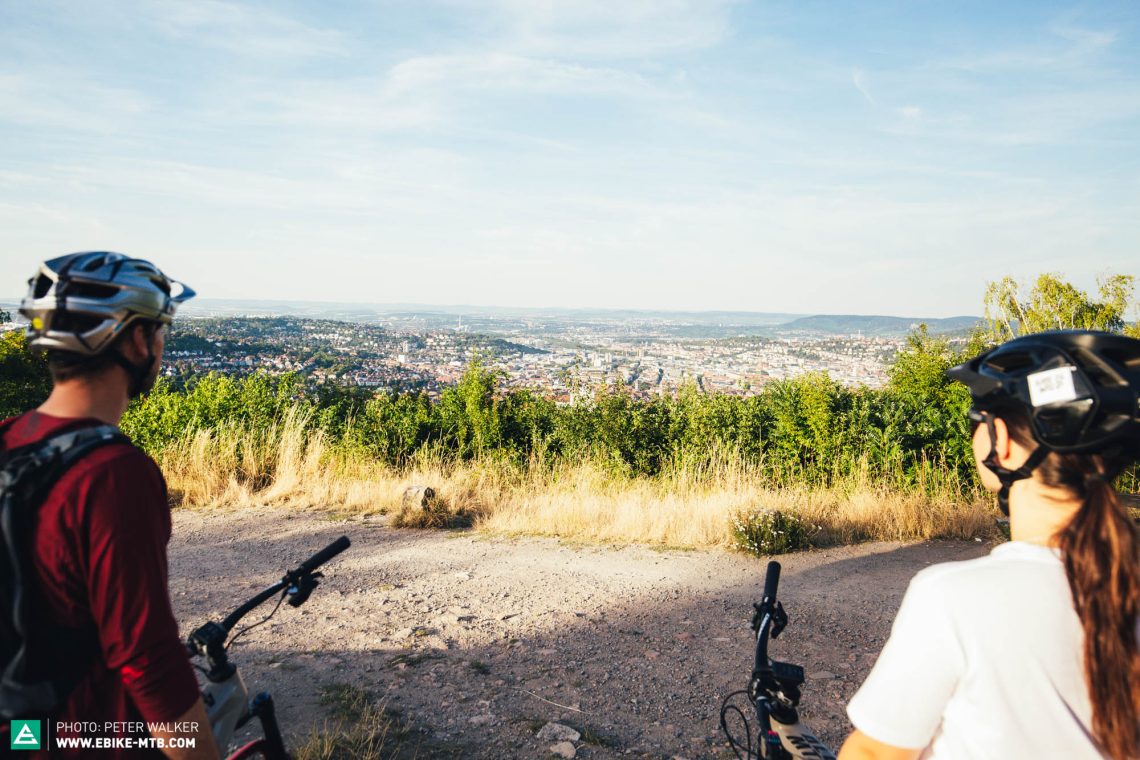
The guiding star
Other cities have church spires, but in Stuttgart, until recently you could use the Mercedes star on the central train station tower for orientation. Regardless of whether it’s switched on or off, it represents a city that’s built on engines and machines. Here, where Gottlieb Daimler and Wilhelm Maybach invented the first four-wheeled car in 1886 and Ferdinand Porsche created one of the most iconic cars of all time, the city’s DNA is rooted in mobility. Things don’t just work here – they roll.
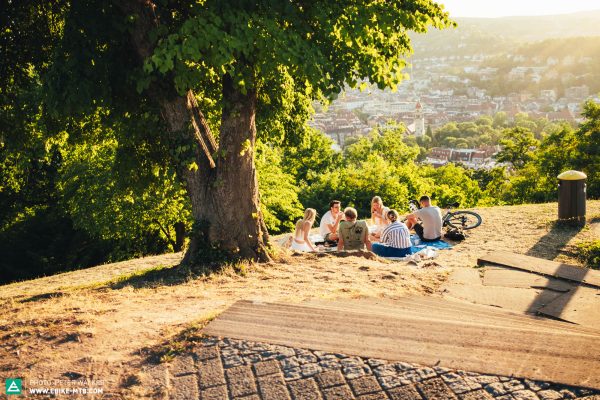
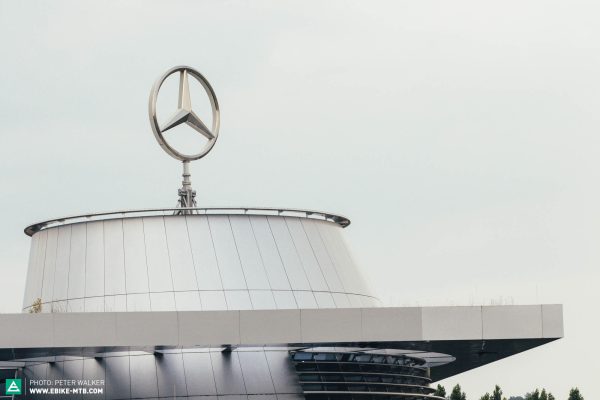
That said, they used to gallop. Pointing to its origins, the horse in the original Porsche emblem was taken from the city’s coat of arms. The former stud farm, which long served as a residence for the counts, dukes and kings of Württemberg, became an innovative and world-leading economic, industrial, financial and IT hub at typical German motorway speed. One of each, please – thank you. Today, it’s the silicon valley of modern mobility, whether it’s ebike ABS, huge development centres for networked and autonomous driving or numerous ebike manufacturers – Stuttgart is home to some of the most important players in this market.
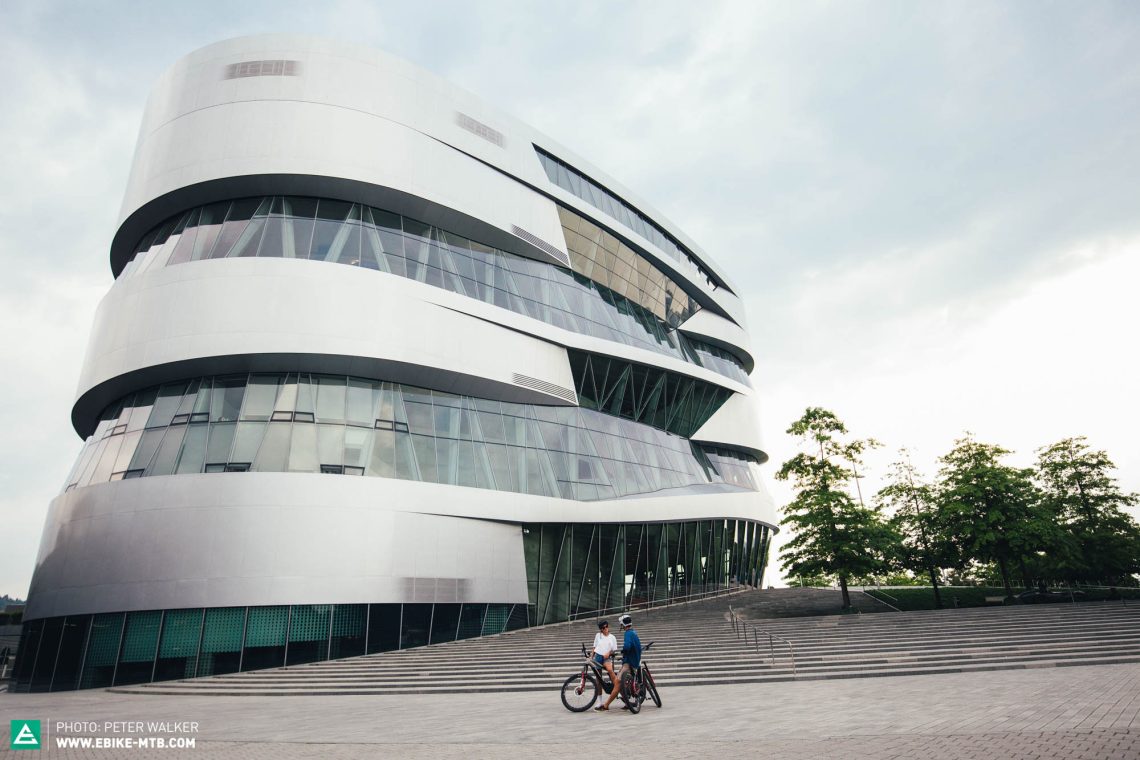
Always on the hustle
Stuttgart represents a culture of invention, doing and tinkering. The local crafts and trades sectors as well as high-tech industrial production, aka Industry 4.0, generate more than 227 billion Euros annually, making it one of the leading economic hubs in Europe, including the production of intellectual property. With the headquarters of global companies and more than 30,000 businesses from various industries, the city is one of the country’s most prosperous movers and shakers. Companies benefit from a wide range of qualified professionals, modern infrastructure and world-class research facilities. Fittingly, Stuttgart has a huge community of so-called “corporate kids”, whom it provides fertile grounds to come together, exchange ideas and inspire one another.

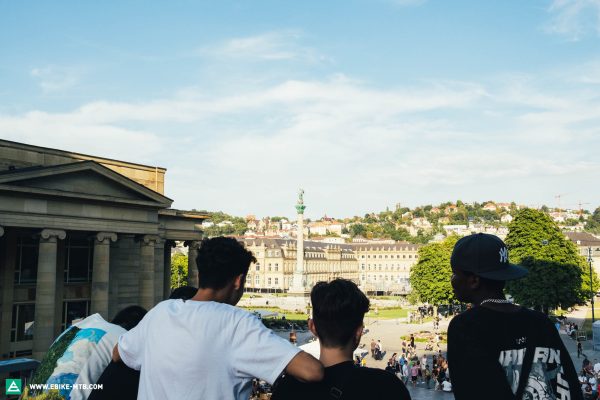
Employees earn more in Stuttgart than almost any other state capital. As a comparison, Stuggi was at the top of the salary ranking of comparable cities with an annual median income of 54,012 Euros, of which the frugal Swabians don’t throw a single penny into any wishing-well. But business isn’t everything.
Prosperity and quality of life – that’s what Stuttgart promises. Nonetheless, like other major German cities, its number of residents has been dropping since 2019. Certainly, some of the locals demand more from their city. If you talk to them, they’re looking for the kinds of things they end up moving to Berlin for: that big city feeling, for example! But if you’re looking for a big city with plenty of greenery, a temperate climate, lots of trails and peace and quiet, this is the place for you.

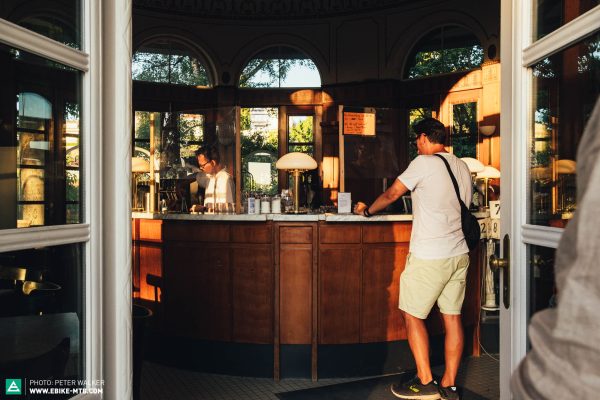
Young, cosmopolitan and no red carpet
Stuttgart’s residents seem to be naturally nonchalant yet confident. You don’t make a big fuss here, you just tinker. You take ownership and don’t blame others, you create. “No complaints is praise enough!” says a local proverb. This is all part of the typical Swabian understatement. Even the once-infamous Theodor-Heuss-Straße, known as a playground for boy-racers with modified cars, has now been re-paved with a cycle lane and speed cameras.
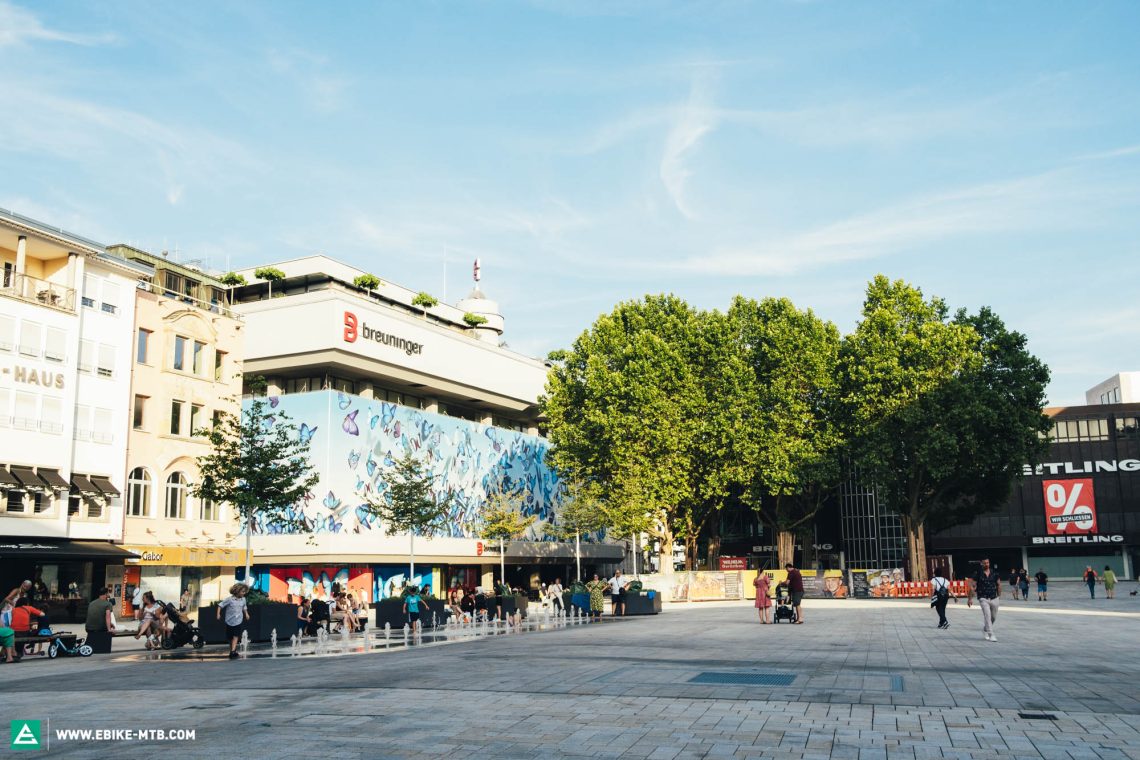
In comparison with other major German cities, Stuggi is ranked 4th in terms of the age of its residents, coming in just behind Hamburg. At an average age of around 42, it’s an even younger crowd than you’ll find in Berlin, but we doubt whether you’ll notice it. What strikes is the city’s cosmopolitan vibe, with people from over 185 different nations calling it home. The proportion of migrants is around 44 percent, and as many as every second person amongst the youth has foreign roots. More than half of the new citizens hail from other EU countries. This makes it one of the cities with the highest migration rates in Germany. It’s no wonder that Stuttgart also has Germany’s highest proportion of immigrant entrepreneurs. Stuttgart doesn’t relegate its new citizens into isolated suburbs as in Rome or Paris, integrating migrants into existing communities in the city centre and surrounds instead. You won’t find any ethnic enclaves in this city. While Stuttgart is future oriented, it doesn’t forget its traditions, such as the “Kehrwoche” (sweeping week), during which the hallway in your house must be swept.
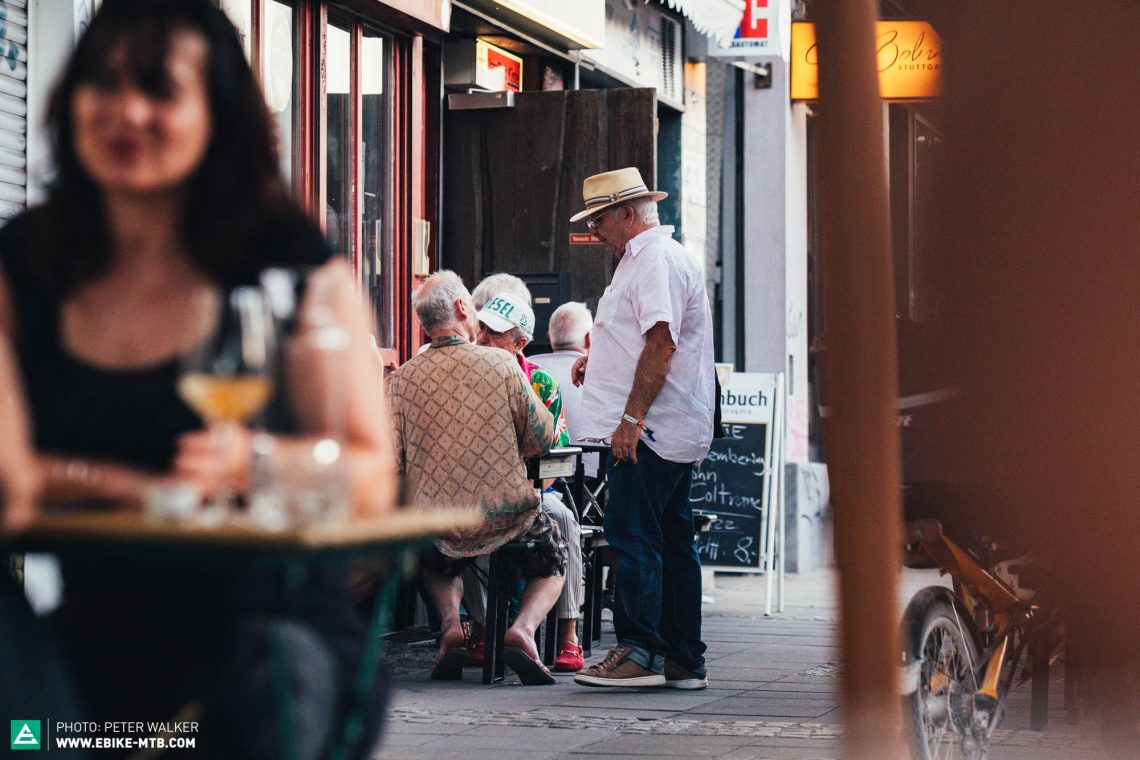
Fun fact
Around 44 million litres of mineral water gush out of the ground here in Stuttgart every day. After Budapest, this city offers Europe’s largest supply of mineral water. The healing and mineral springs are mainly located in the districts of Bad Cannstatt and Berg. This certainly isn’t just news to you, but also a surprise for most of the city’s residents. Oh, and one more thing… The pretzel was also invented here.
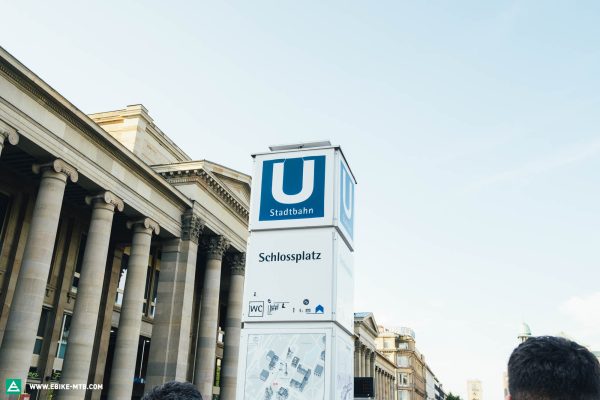
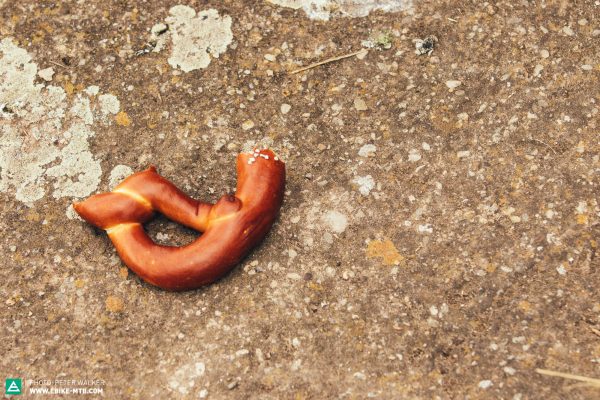
Stuttgart has a lot to offer, much of which it invented: cars, pretzels, engines, wine, water and know-how. But with our City Escapes, we don’t just look at what the various cities have to offer in terms of culture, ingenuity and general quality of life, we also sample the dirt of the best local trails. So, let’s get on the bikes, turn on the motors, and fact check Stuttgart’s trail conditions! Read on to find out how this city fares as a trail mecca!
2/6 Where do you start, where do you stop?
If there’s one thing Stuttgart isn’t stingy with, it’s trails.
For a place nicknamed the motor city, we were surprised by a huge network of trails, unrivalled among other German cities. We ploughed through the ruins of the Second World War with the locals, revved our engines in the Black Forest and came together at Solitude Palace.
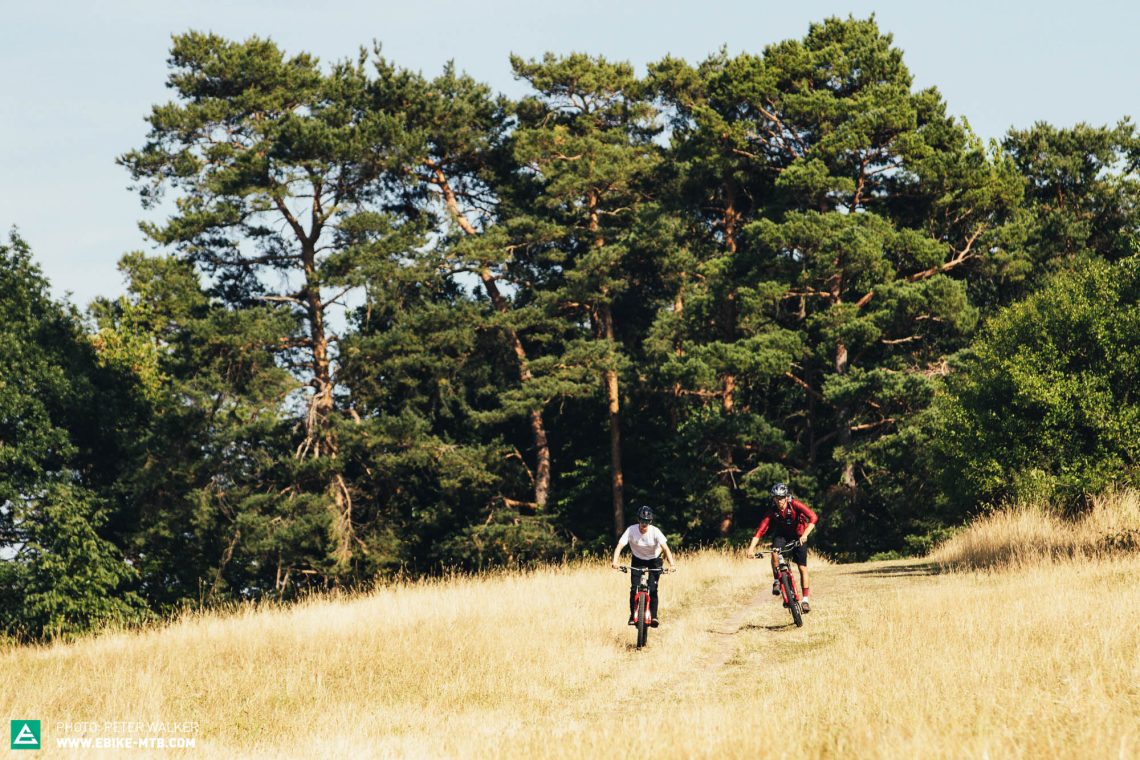

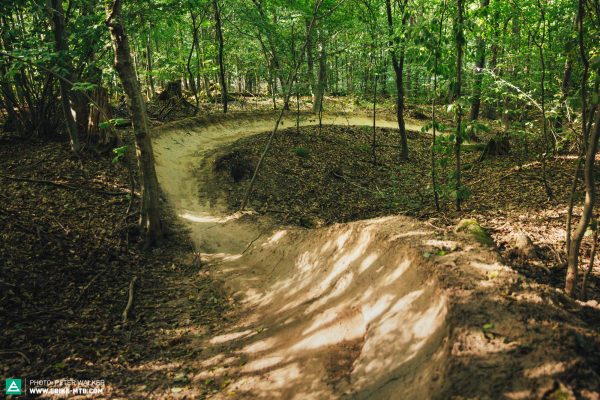
Big city feeling or not, at the end of the day, Stuttgart plays its trump cards – trails, trails, and trails, and all of them in the city’s immediate vicinity. After a few espressos and a pretzel, local Tanja shows us the best spots to get the wheels turning.
Not far from the E-MOUNTAINBIKE HQ, we mount our Haibike AllMtn ebikes and roll into a forest just a few minutes later. The heat is stifling under the blistering sun and there’s no breeze, so we take a short break in the shade and have a chat. Tanja rides the city’s trails pretty much every day. It helps her find the right work/life balance after a long day’s work at Bosch. What she likes most about the local trails is the variety, and that you can find yourself in nature with just a single spin of the cranks.
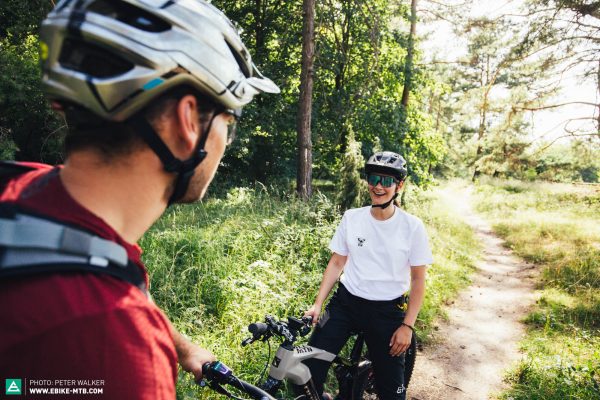
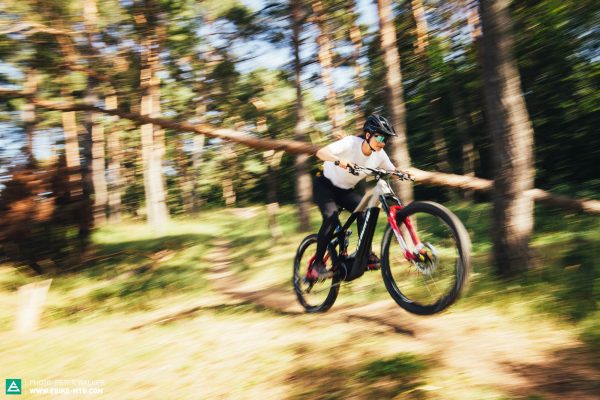
Look, no matter whether you’re looking for flow trails or big air, here around Stuttgart, you’ll find everything you want!
-Tanja
The number of trails is no surprise once you get to know the city. After all, it has one of Germany’s biggest mountain bike communities. As we ride, we meet more bikers than in all our other City Escapes combined. And there have been many – whether Zurich, Vienna, Paris, Berlin, Rome or Lisbon, you name it. There’s no denying the popularity of bikes in Stuttgart. Our route takes us to the Baroque Solitude Palace, which was built between 1763 and 1769 as a hunting retreat. However, there’s little solitude to be found. This is where Stuttgart residents come to take a break, enjoy the view, picnic and chill. We don’t stay long – the trails are calling! We take a selfie, strap our helmets on and go.
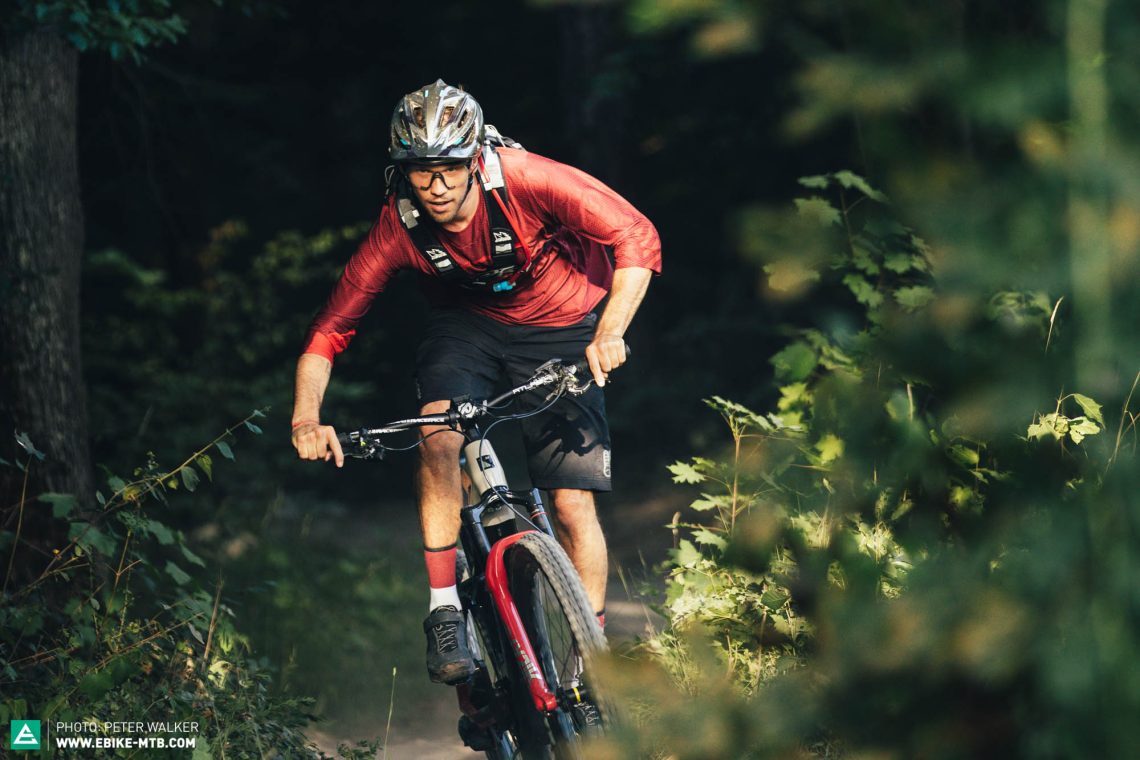
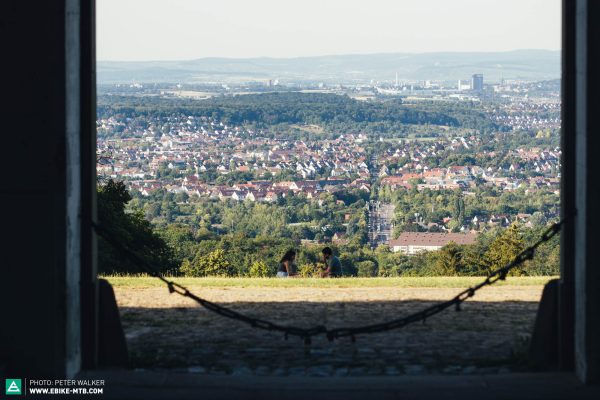
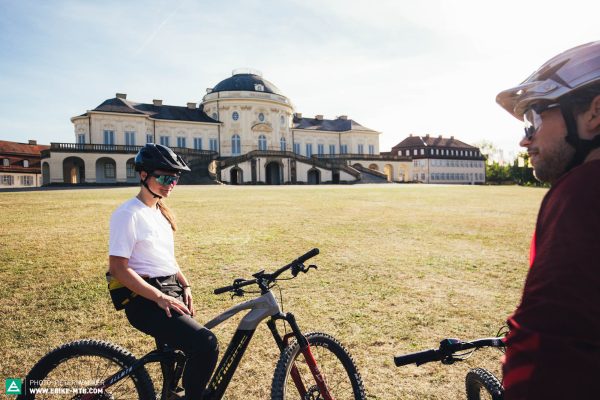
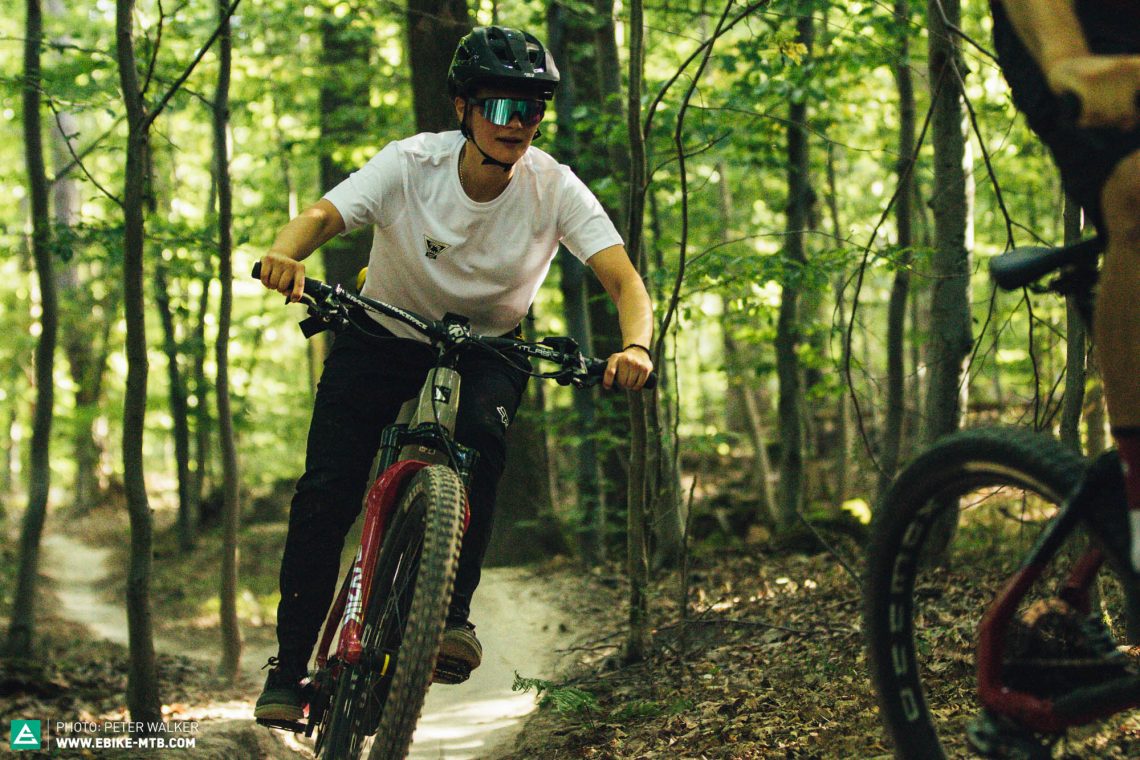
Surrounding Solitude Palace, you’ll find a lot of trails with funny names and tight switchback corners. Small jumps and sections of rollers take you down into the valley like a rollercoaster. It doesn’t get much more flowing than this. Looking for big doubles and drops? Here, you’ll find everything you’ve ever been looking for. Most of the routes have become well-established over the years. You shouldn’t have any problem finding them, and if you do, you can just ask an oncoming biker. The Swabians aren’t as uncommunicative as people like to think.

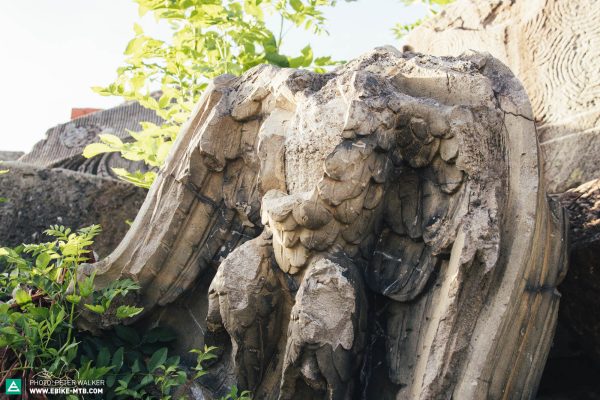
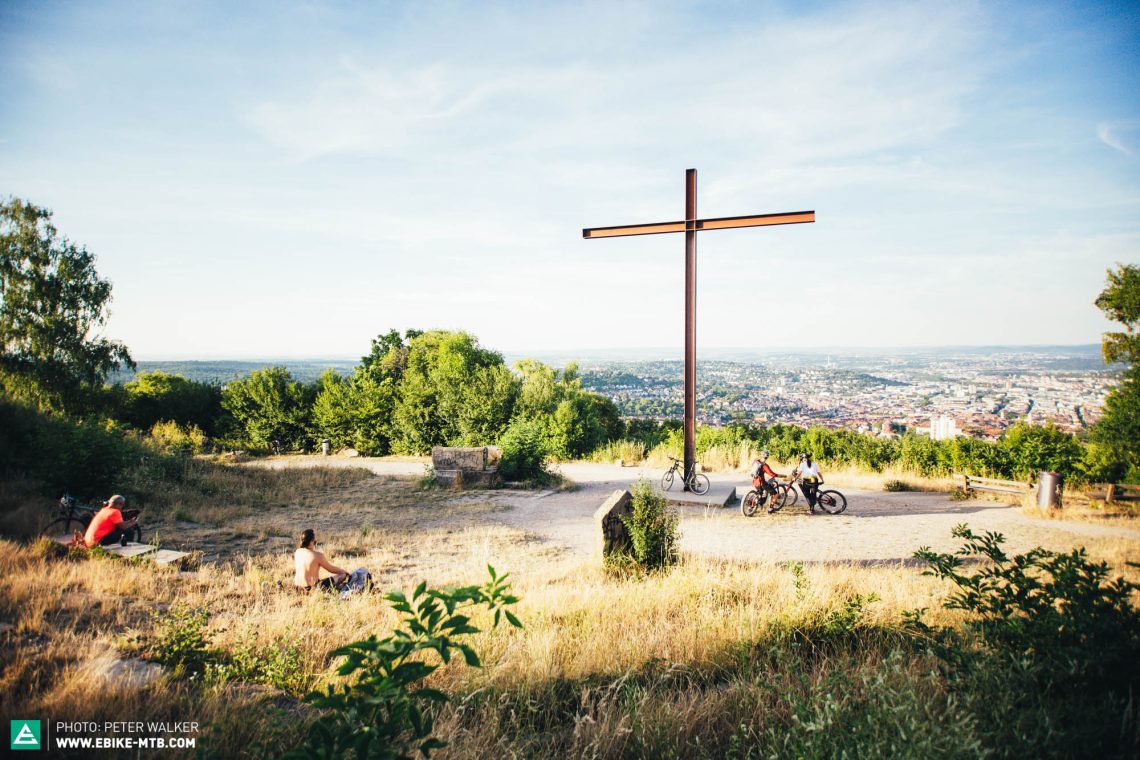
At an altitude of around 511 metres, you will find Monte Scherbelino (Shard Mountain), which is actually called Birkenkopf. It’s a piled-up memorial, consisting of the WW II remains of the heavily bombed Stuttgart, commemorating the victims and warning the living. Here and there you can see fragments of old buildings, churches and palaces sticking out of the ground, serving as a powerful reminder of the past. Around 15 million cubic metres of rubble make one of the best look-out points over the valley.
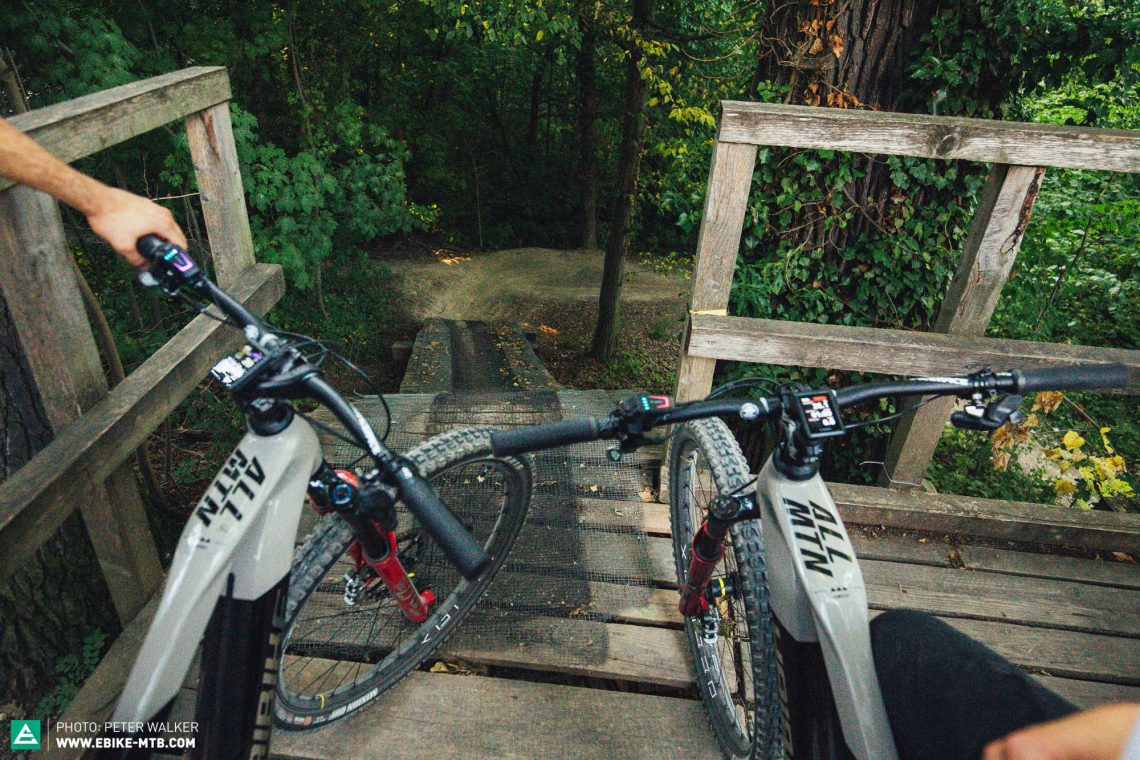
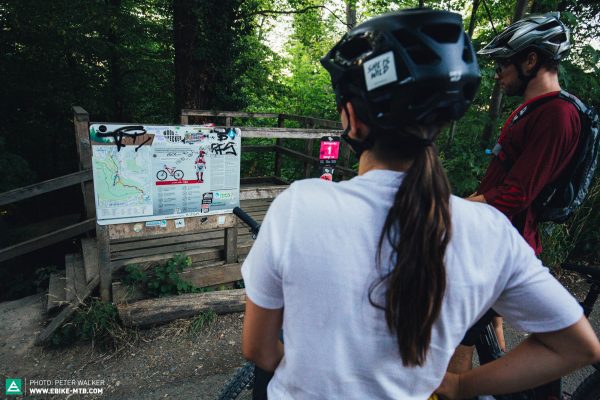
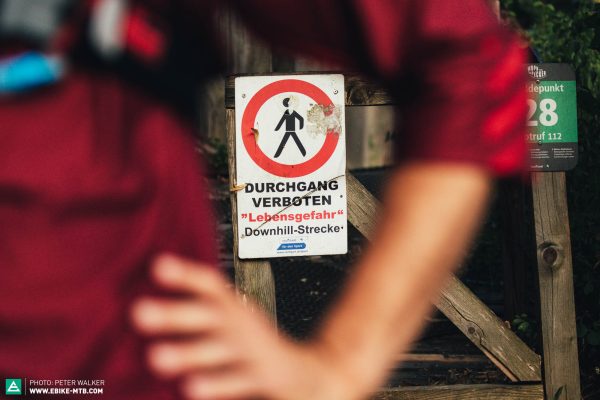

Before we roll back into town, we do one more run of the legal downhill track, Woodpecker, which is the first DH track run by a municipality in Germany. Here, Stuttgart’s bikers can pursue their beloved sport and slowly build their way up to big jumps. The trail has an elevation drop of 120 metres, has about 27 different features such as berms, doubles and drops, and is about one kilometre long. We found it lacked a little flow and fun.
Disillusioned with the previously hyped DH track, we treat ourselves to pizza, veggie kebabs and one drink too many on an empty stomach. Here, from the Marienplatz square, you can hitch a ride up the mountain with the cog railway “Zacke”, reaching a gradient of up to 17.8%. Can you take your bicycle along? Of course!
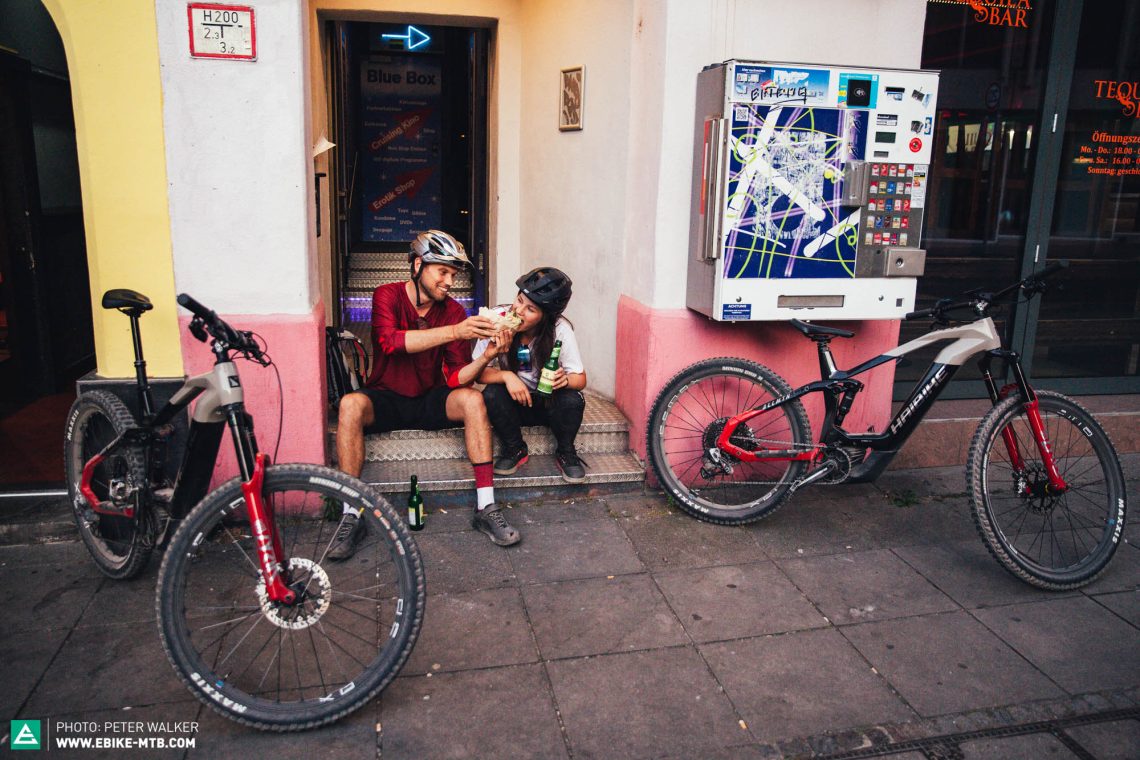

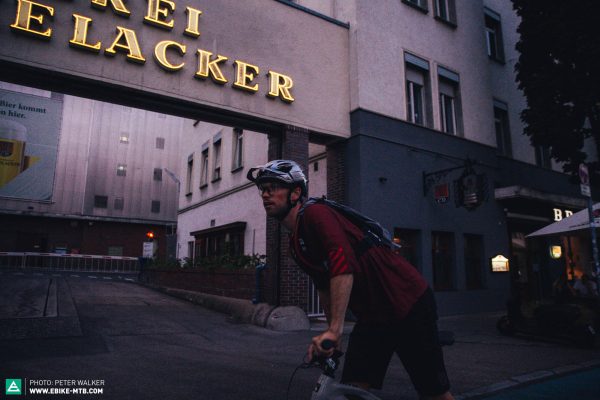
If the vast trail network around Stuttgart isn’t enough for you, you should make a detour to the nearby Black Forest. It’s got bigger mountains and vast expanses of unspoilt forest. You can either put on your full-face helmet and enjoy the tried and trusted downhill track in Bad Wildbad or you can flow along routes like the Monakkam trail at Bad Liebenzell. We hit the trails with our local friend Erik, hammering through rock gardens, railing tight corners and finding flow. Of course, we took the Porsche Cayenne E-Hybrid to get there, as befits Stuttgart.
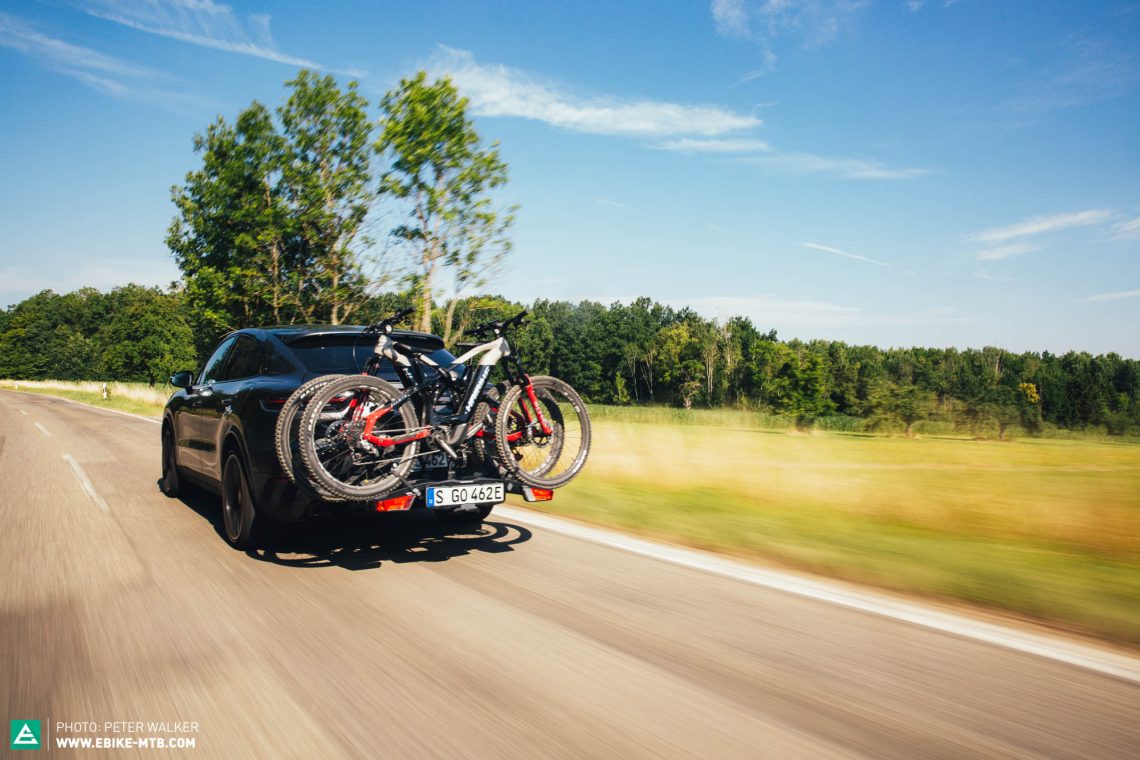

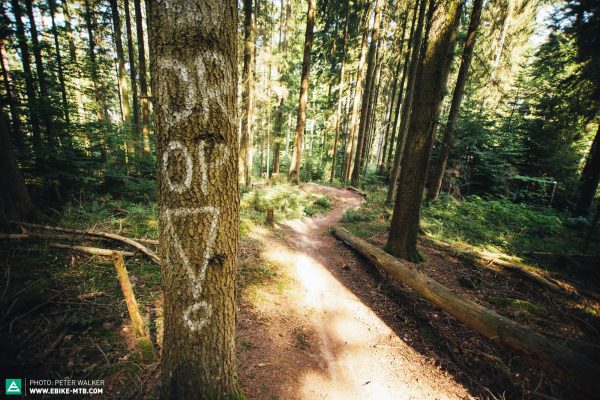
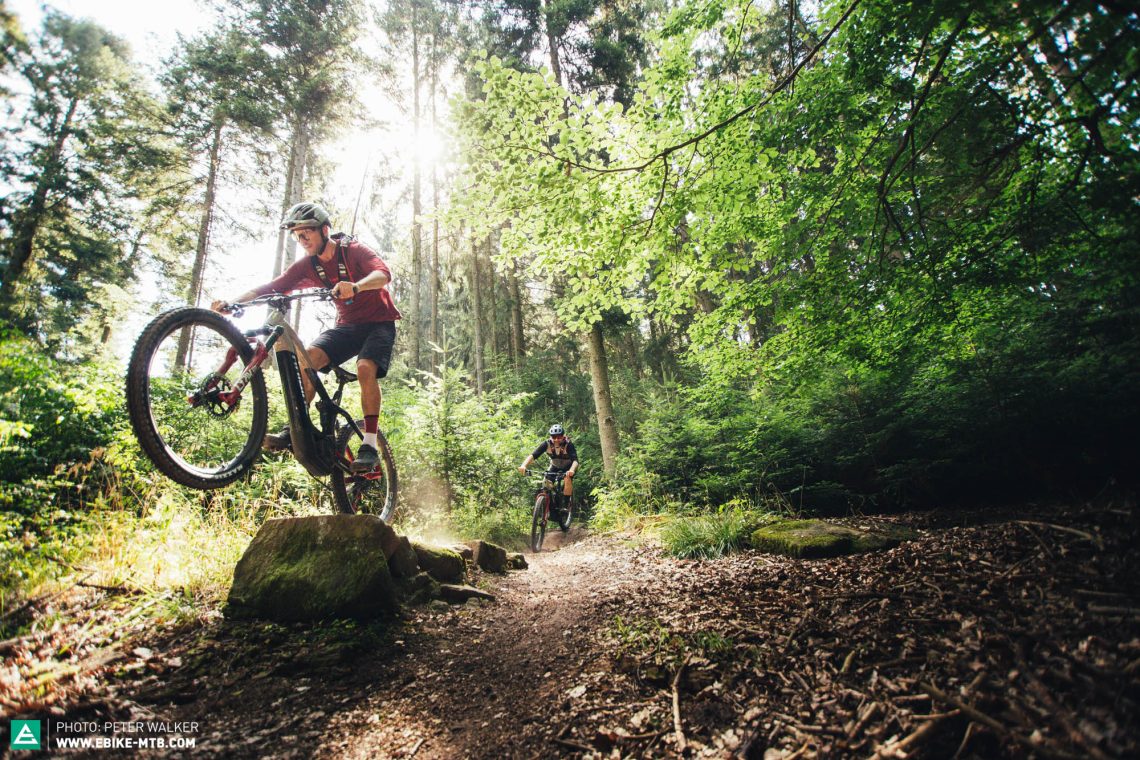
If you’re looking for a city with lots of easily accessible trails and short distances into the nearest woods – look no further. With countless flow trails, Stuttgart offers an incredible amount of variety and fun. So, what are you waiting for? Charge your batteries and explore everything the motor city has to offer. Top it off with a post-ride beer in the city or the famous Bärenschlössle (Bear Castle), enjoy the easy life, and treat yourself to a meat- or veggie-filled dumpling.
3/6 HP
It’s not where you are, it’s what you do!
Nothing works in Stuttgart, it rolls, because the motor city has one passion and two engines. When you meet on the weekends, it can be with the combustion engine of your classic car or the electric motor of your eMTB. We met up with the HEIZR Club, a classic car club symbolising the city’s transformation and showing what’s long overdue.
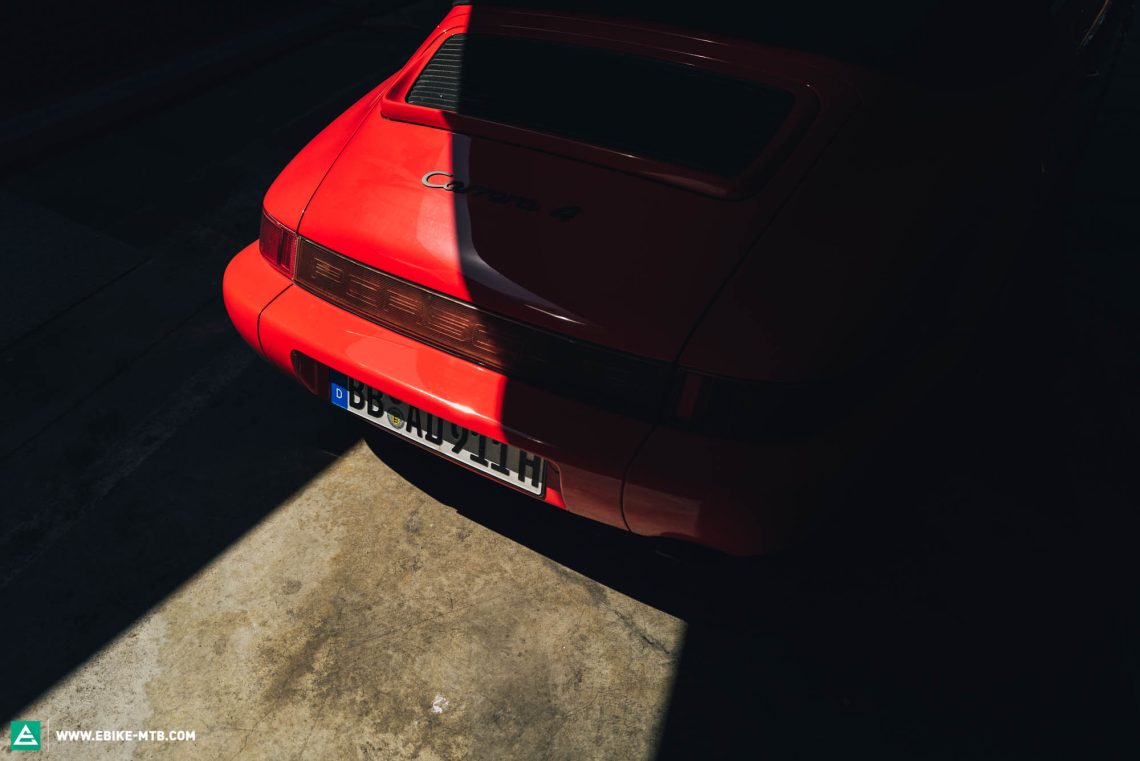
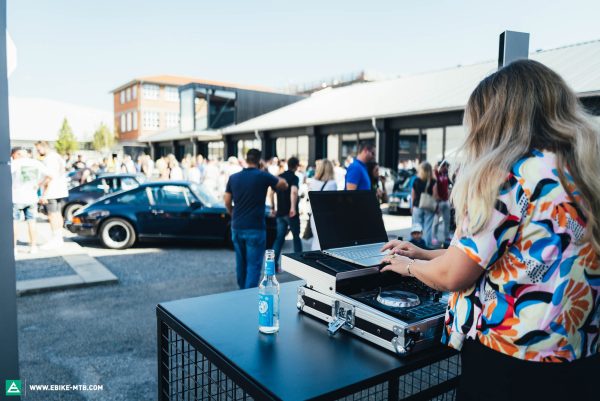

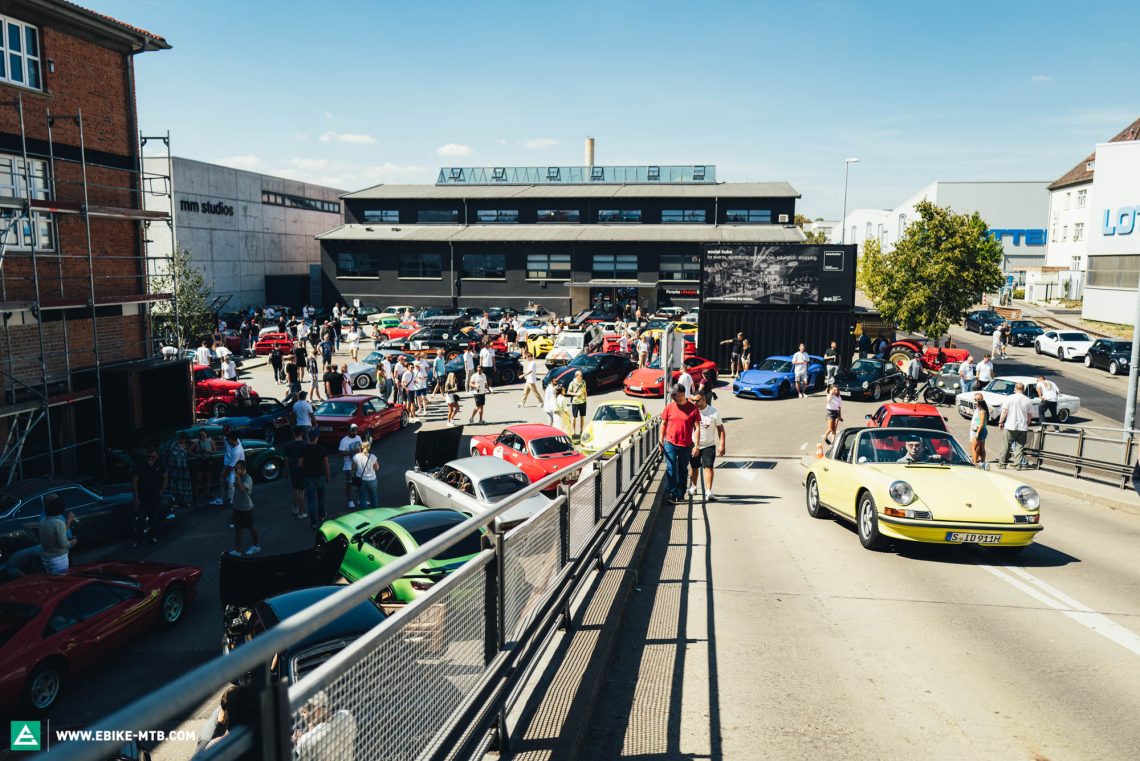
Lowered suspension, flame decals and posers. I must admit, these are the things I used to associate with clubs made up of young petrol heads. But the HEIZR Club is different. Founded at the beginning of 2021, it has since met for casual post-work drives, excursions to the Black Forest, as well as bigger organised events with as many as 500 Classic Cars and 1000 visitors, all combined with barbecues, pour-over coffee and banana bread.


Many of the HEIZR members are very passionate about automobiles, but at least as important – if not more important – are the shared experiences, the community and the fun of driving. It’s not just about owning vintage cars, but also about driving them. Companies such as Porsche, Mercedes and BMW from Munich also take part – all of them exhibiting rare and special vehicles from their classic collections at the events. The 30-year-old founder of the HEIZR Club, Felix Bauermeister, who moved from Hamburg to Stuttgart because of his love of the automobile, collaborates with a wide variety of artists, creating cool collabs and shirts for the community. The success of the HEIZR Club shows that it took an outsider to get brands like Porsche, BMW and Mercedes to collaborate at an event and, above all, that Stuttgart’s residents need an open and modern community to exchange ideas.

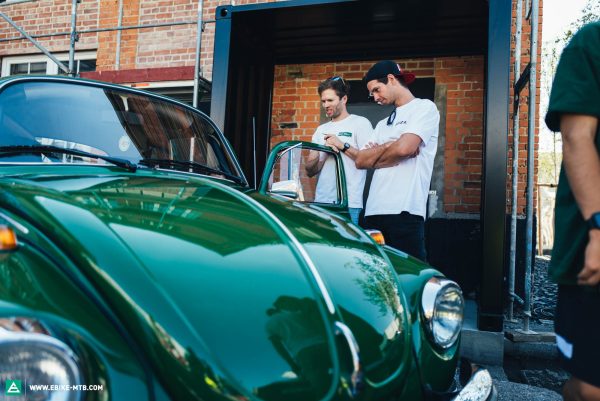
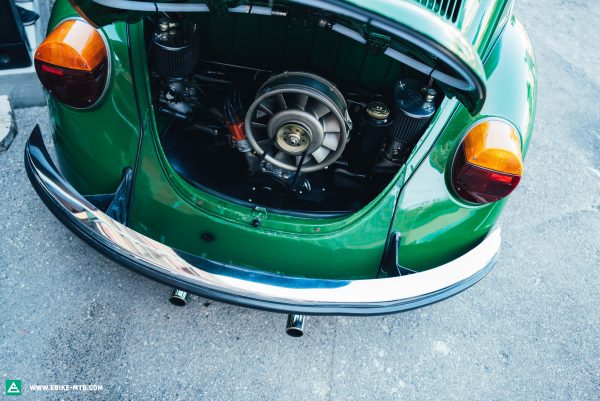
There is no need for membership, just a good mood and showing up – you’ll rarely find posers with revving engines and squealing tires around here. The HEIZR Club also symbolises the gradual transformation of the city, which has made major improvements to the road network, such as updating the infamous Theodor-Heuss-Straße, once a hot-spot for fast cars, by adding a cycle path and imposing a speed limit with cameras.
“They see me rollin’, they hatin’…”: We’re sure we’re not the only ones who still get this song by Chamillionaire stuck in their head, but the poser times are gradually coming to an end. Incidentally, the Swabian capital played a vital role in laying the foundation for the German hip-hop scene in the 90s and was a stronghold of the subculture at the time.
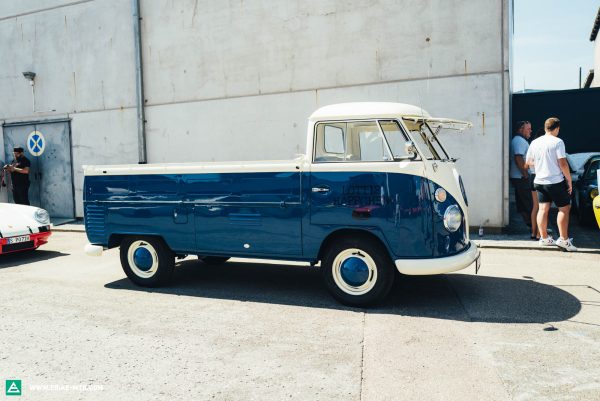

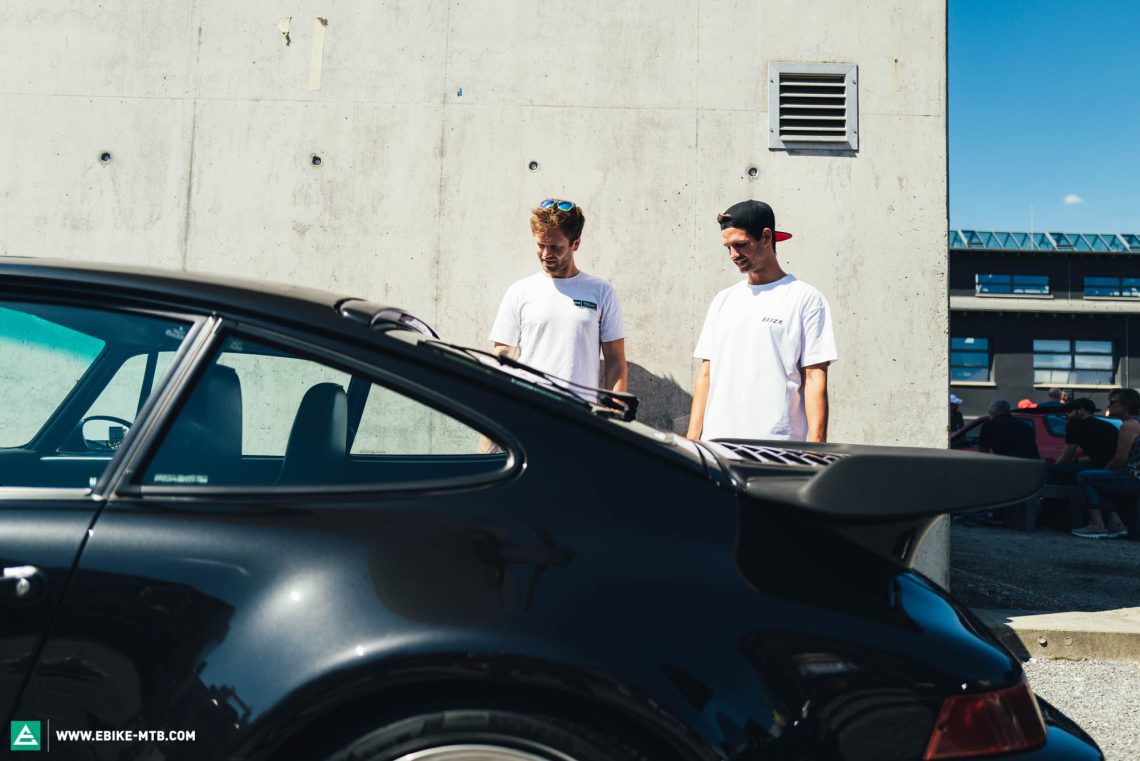
We got to know Mitja and Nick, two developers from Porsche’s racing department, at the HEIZR Club – and quickly realised that we have more hobbies in common than cars. And that’s true not just for us – very many of the HEIZR Club members also share a love of bikes. So, we arrange a spontaneous ebike ride. How about strolling along to the backdrop of relaxed tunes at the HEIZR Art On Wheels event before grabbing two brand new Haibike LYKEs featuring the new FAZUA motor, packing them into a T2 van and heading out on a sunset shred in the Black Forest? Yes please!
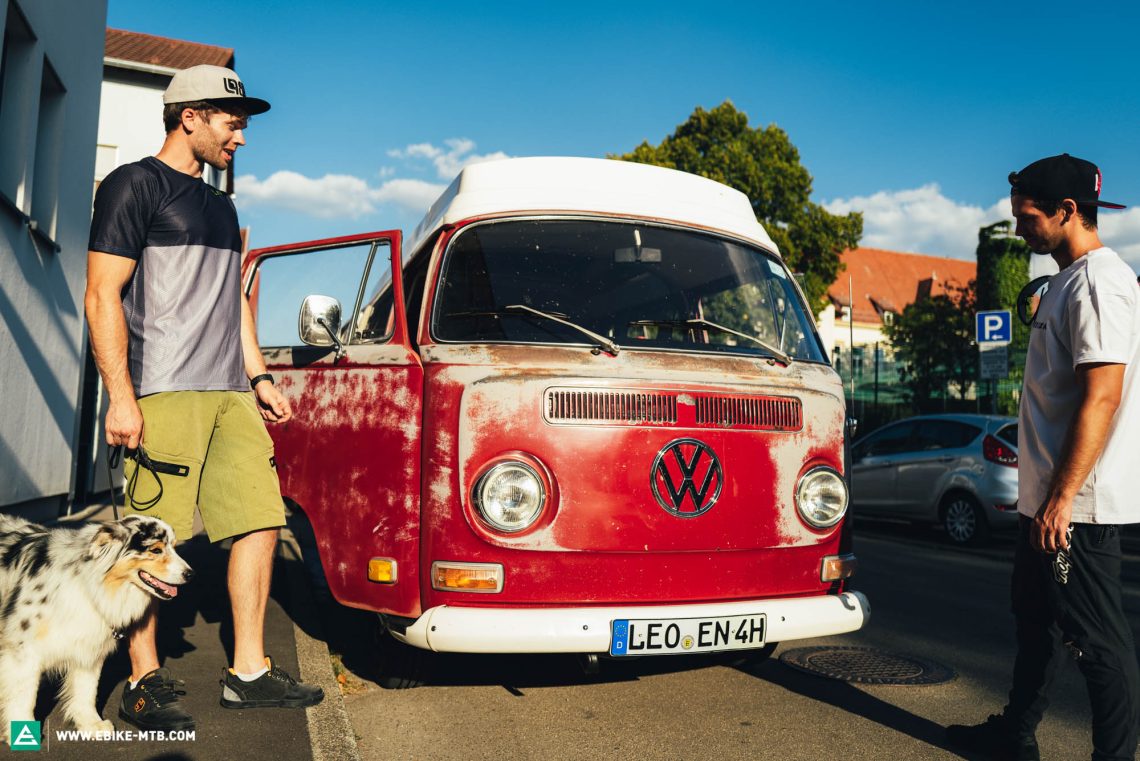
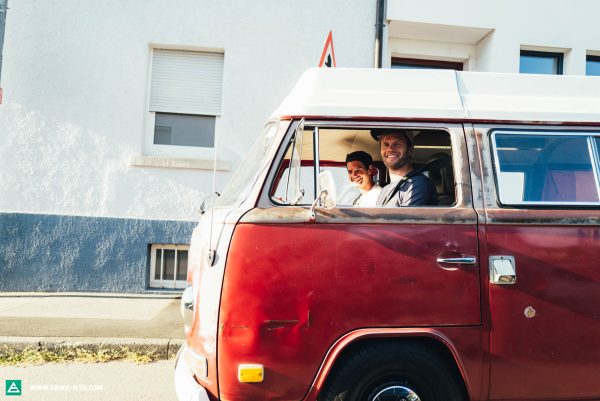

Funny sidenote: Nick and Mitja just met at the HEIZR Club meeting for the first time, even though they’re work colleagues. Why didn’t they meet until now? We asked ourselves the same question. It turns out the racing department in Weissach already employs several hundred horsepower fanatics. There are just too many petrol heads tinkering on engines, chassis and driving experiences for all of them to know each other by name. It comes as no surprise that both do a lot of tinkering on their own cars in their spare time. For example, Nick built his own engine for his bright green VW beetle. The same applies to his T2 bus, which is our evening ride to the Black Forest. Obviously, we all have to check out Nick’s handiwork on the motor upon arrival. After that, the tech-talk segues over to the bikes. Time to get our helmets on and hit the trails.
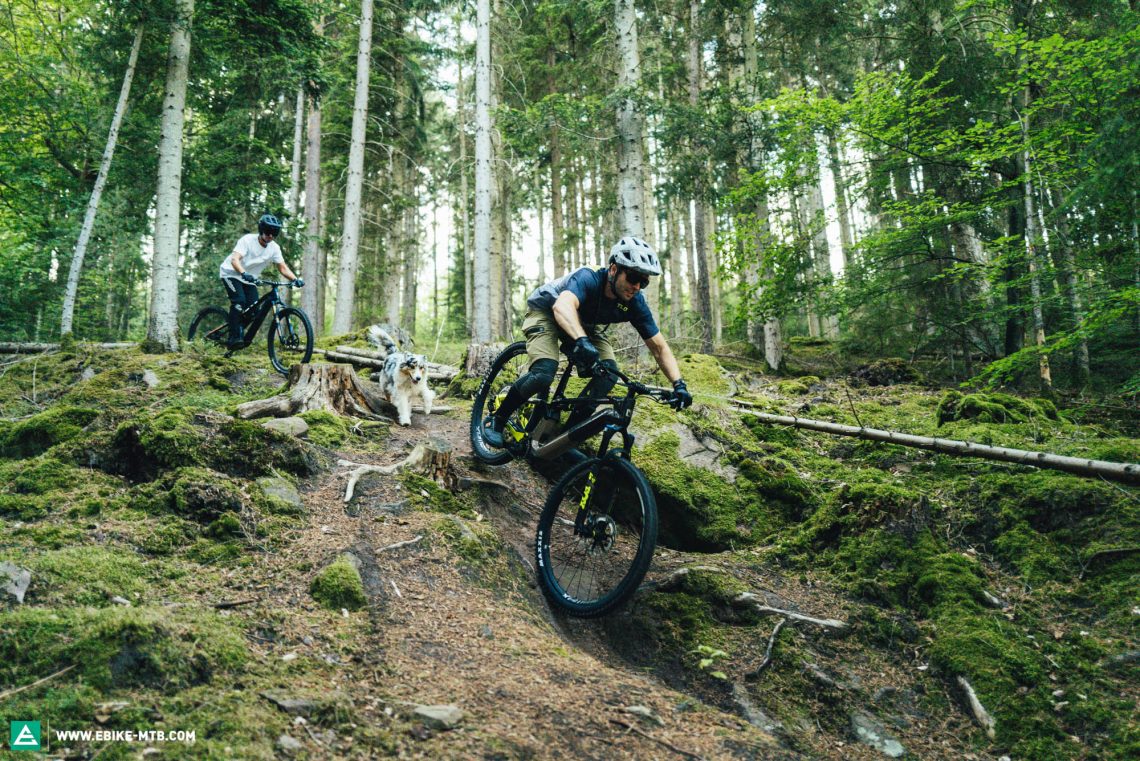



Nick and Mitja chase each other down the trail into the valley. Anyone who has ever made new friends through their shared passion for biking will know the rest of this romantic fairy tale story. Big smiles for miles and relaxed conversations.
Of course, Stuttgart is made up of many different types of people. But we meet quite a few with dirty engine oil under their fingernails and stains from bike chains on their pant legs. Whether gravel, enduro, road bike or eMTB, whether Porsche or Mercedes, they all share a passion for mobility and the technology around it.
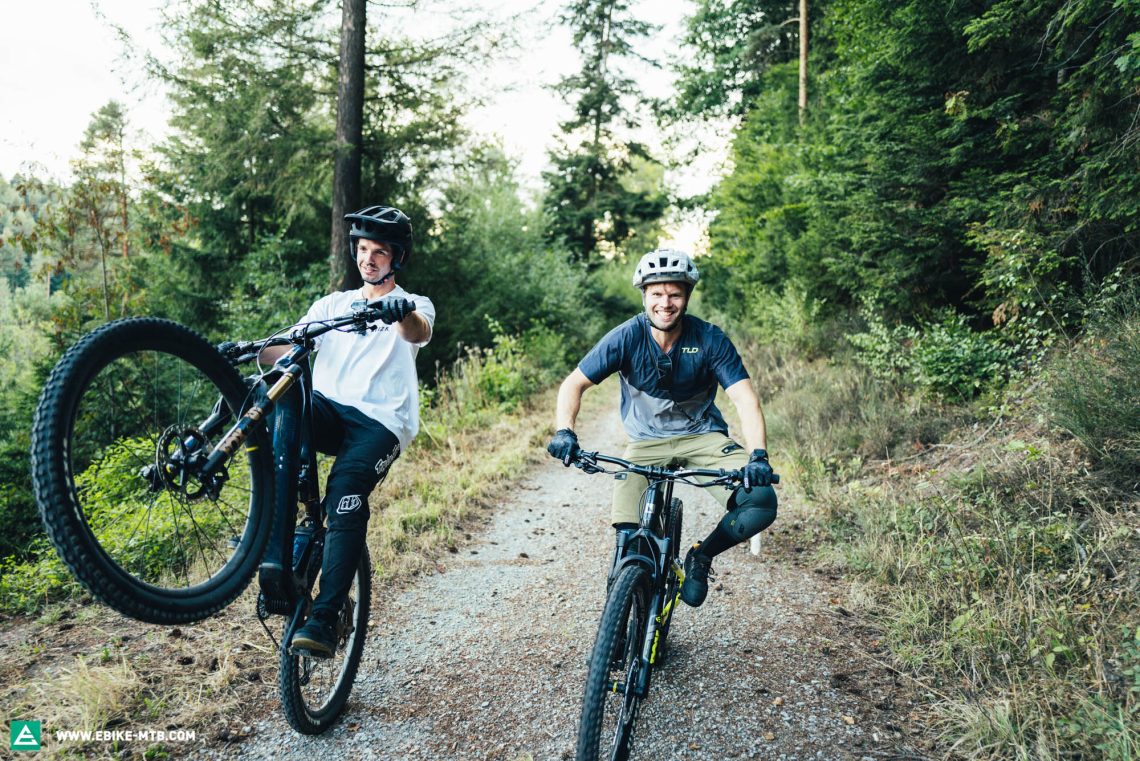
Be it bike, classic car, chess, boxing, gardening, cooking or dog yoga – you’ll find it all in Stuttgart. And while these used to be small minority groups, all that’s changing with rapidly growing communities. The HEIZR Club is a good example of this, and so is the Mountainbike-Verein Stuttgart e.V. eMTB club with well over 1400 members! There’s no denying, in the future, the automobile will have to learn to share the love with ebikes in the motor city.
4/6 Let’s roll!
Stuttgarters don’t just love cars.
If you don’t want to risk being stuck in a traffic jam or getting a speeding ticket, it’s best to travel Stuttgart by bike. There’s no better way to explore the valley city anyway. Local, Paulina, showed us the city in eMTB mode and we learned how pretzels can save lives.

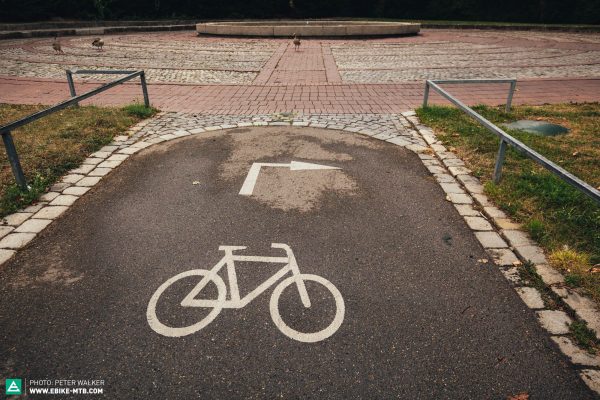
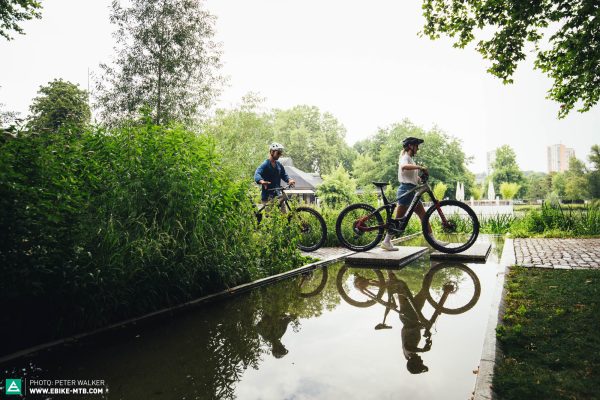
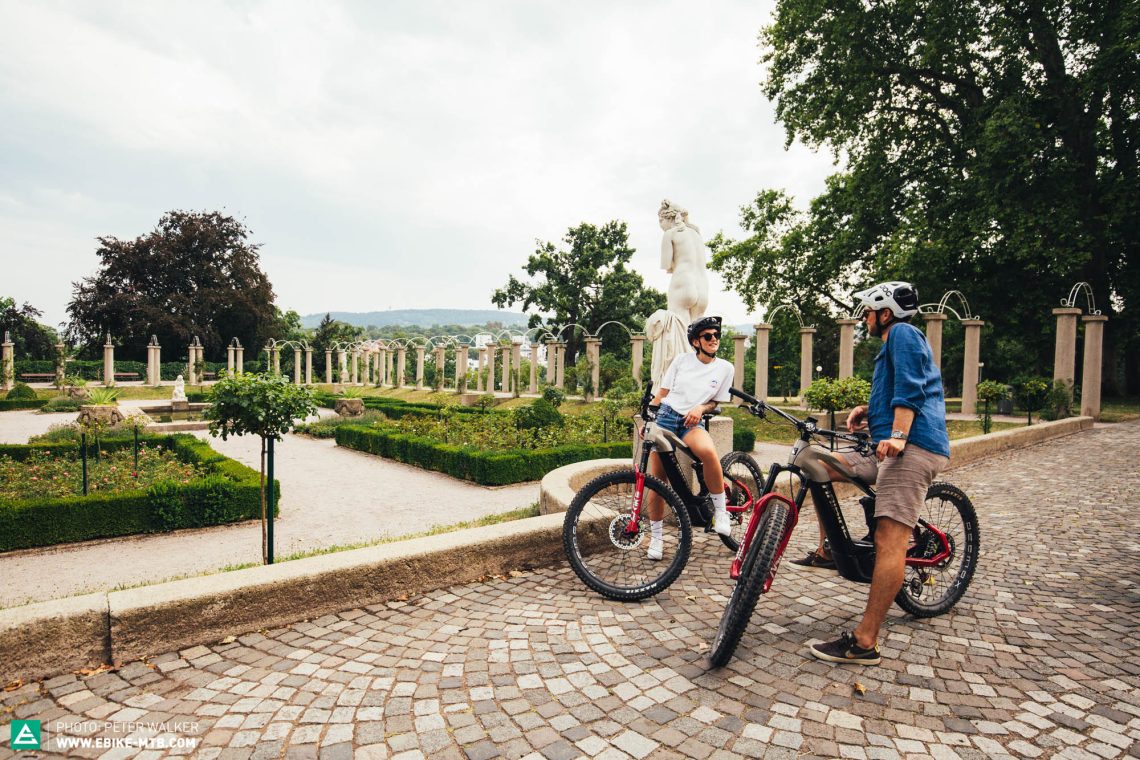
We meet at the Schlossgarten (castle garden). It’s raining. Finally, the city cools down! Nevertheless, people seem unphased as they continue reclining on their picnic blankets beneath the trees, reading, chatting on the phone, thinking. The Stuttgart castle garden is over 600 year-old, spans 64 hectares, and has long served as a meeting point for city dwellers looking to clear their heads. On our way to find something to eat, we pass statues, magnificent buildings, vast green expanses, ducks and traffic jams.
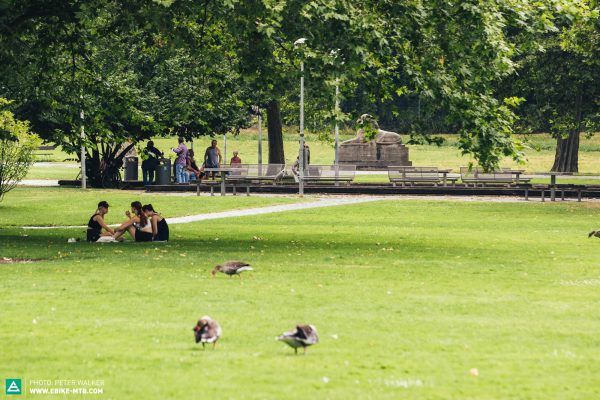
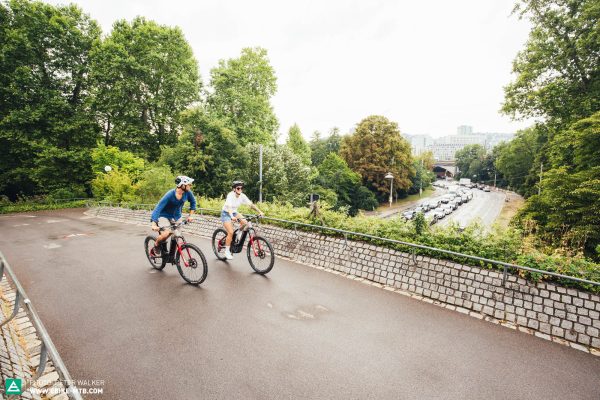
We find what we’re looking for along the Neckar river, at the Neckar beer garden. Pretzel and Aperol spritz – why not?! Did you know that a pretzel once saved a baker’s life? In the year 477, he was sentenced to death for embezzlement. Count Eberhard von Urach promised to pardon the baker should he bake a bread through which the sun could shine three times, giving him just a few days to do so. Inspired by the entwined arms of his wife, the baker invented the shape of the pretzel and was pardoned. A pretzel might not be the healthiest, but it can save lives! That said, you can also get organic whole grain pretzels in Stuttgart, of course!
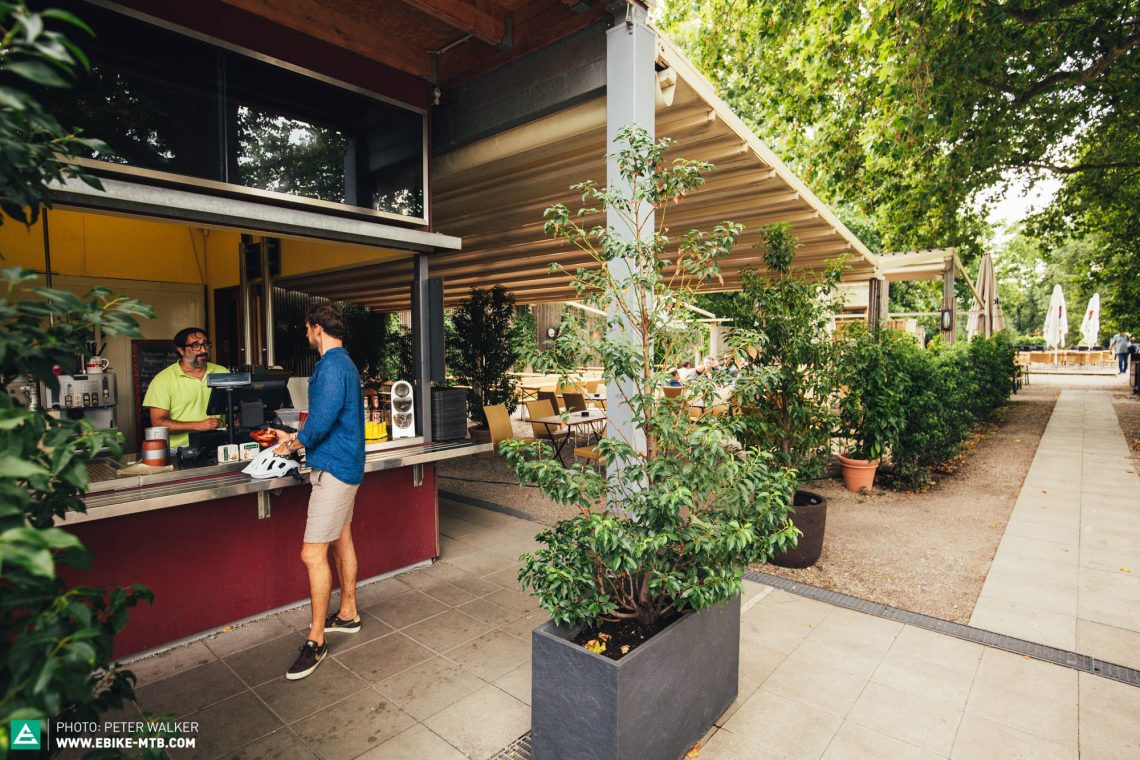
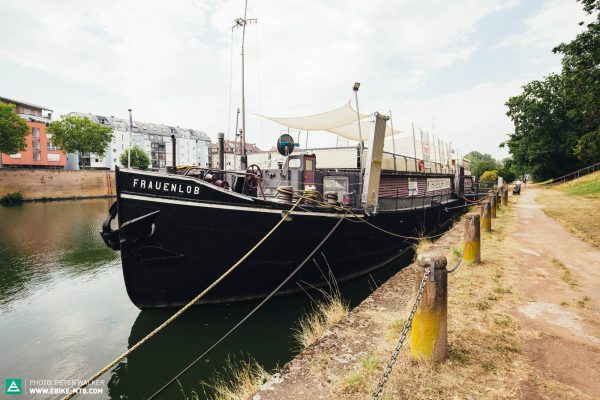
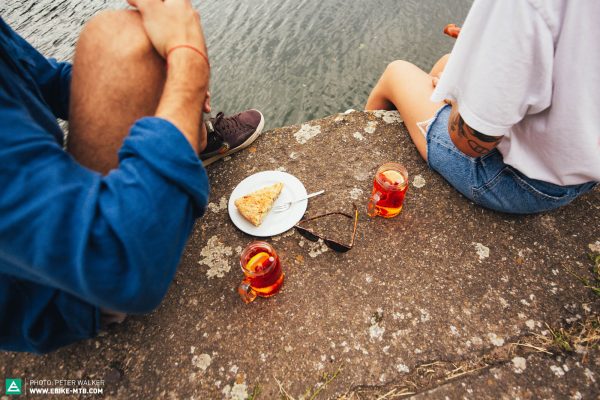



Despite the support of the motors, the sultry valley climate soon gets us sweating as we spin the cranks. The valley of the city is enclosed by the mountains of the Swabian Jura, the Black Forest, the Schurwald and the Swabian-Franconian Forest, keeping any wind from blowing through. This is what makes the slopes of Stuttgart and the Neckar such a good wine-growing region, with about 423 hectares of vineyards. And if you summit any of the peaks, you get rewarded with lookout points in all directions. Our favourite lookout point is at the tea house in Weißenburgpark, with an ice-cream parlour serving delicious ice-cream, relaxed sun-bathers sprawled all-around and far-reaching views.
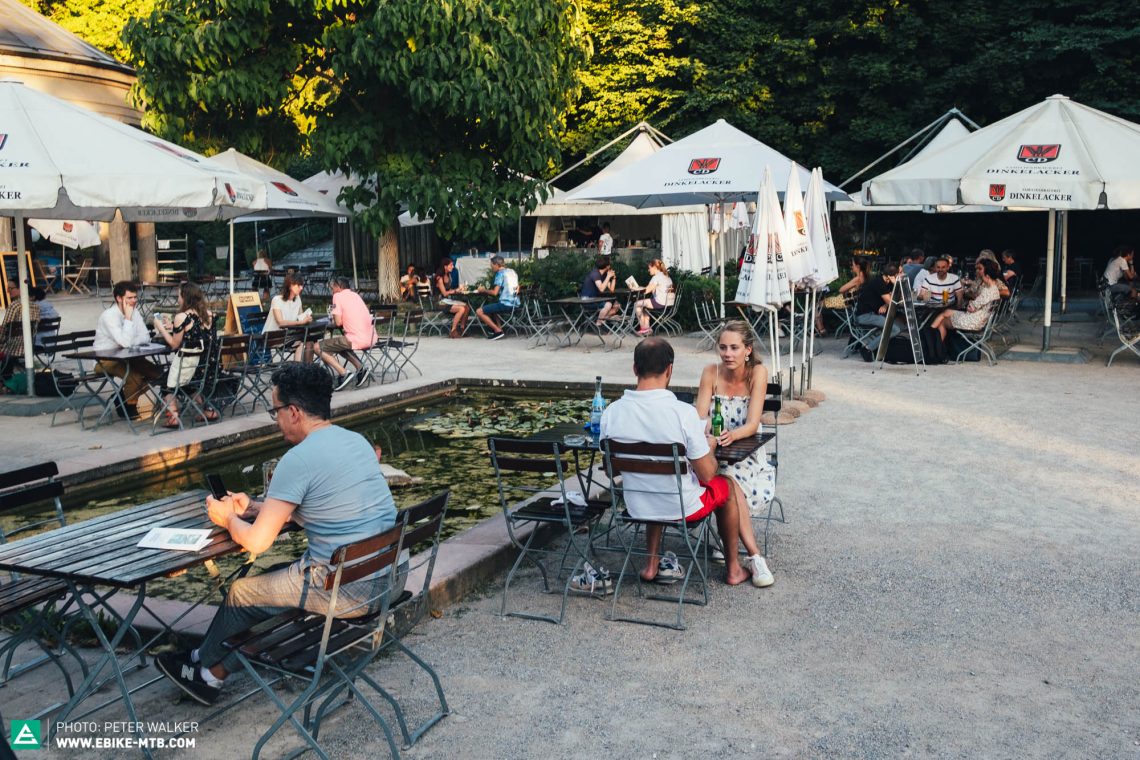

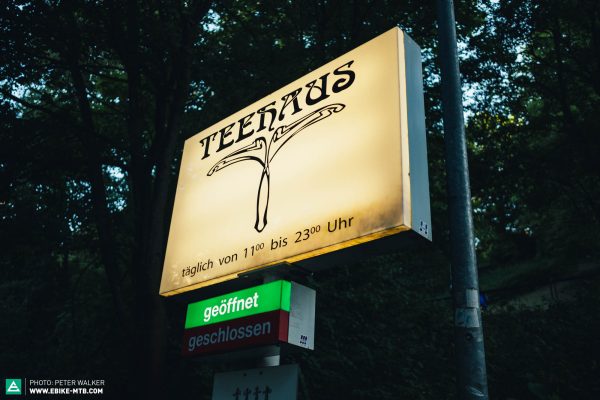
We make a turn at the Mercedes-Benz Museum,but it’s closed! We’re too late. Nevertheless, it’s worth checking out. The modern building is like a gateway to the city, located right next to the plant in Stuttgart-Untertürkheim. The museum is one of Stuttgart’s cultural landmarks, uniting the past, present and future of this legendary brand with the star. There’s a spiralling pathway leading around a spectacular central atrium, taking visitors on a journey through time and the history of the automobile.
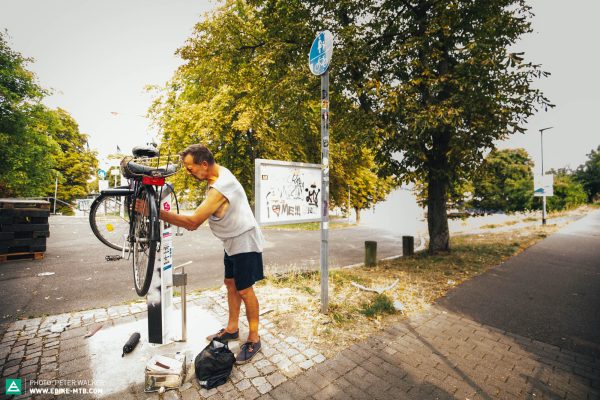

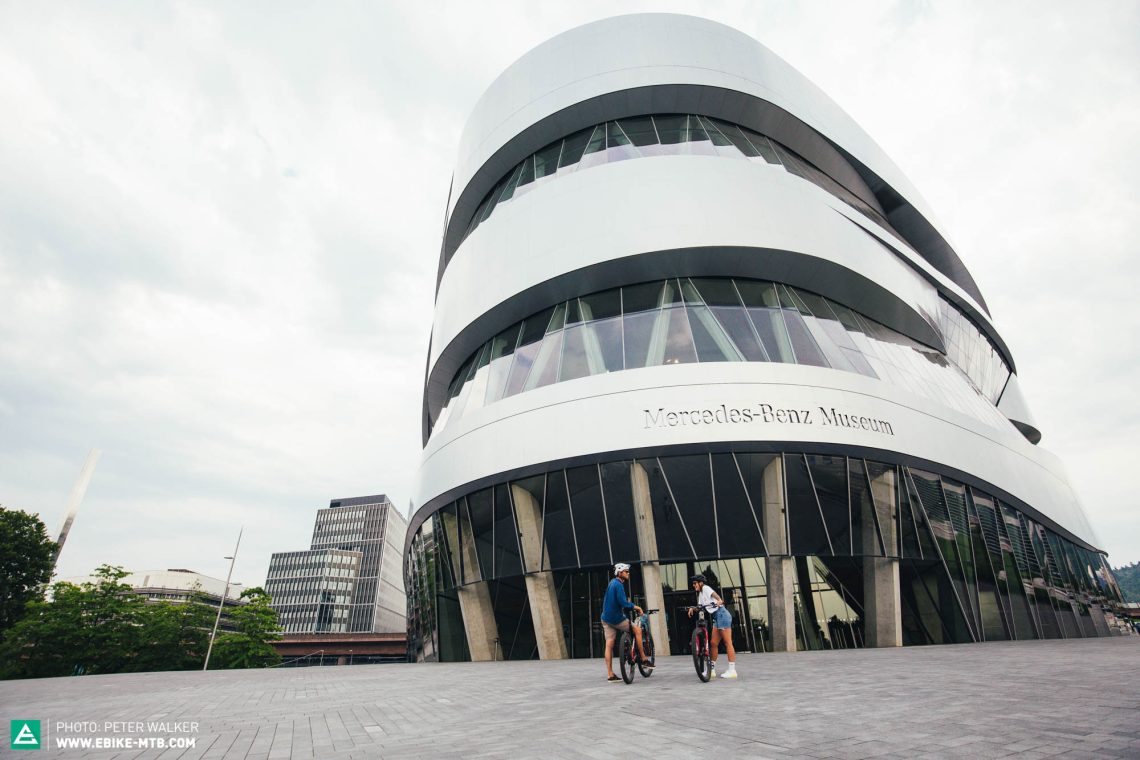
Incidentally, the city of Stuttgart has set itself the goal that Benztown will soon be a bicycle city, too. Some roads, such as Tübinger Straße, have already been converted into dedicated cycle paths and existing cycle routes have been improved. Soon, cyclists will account for more than 25% of the total traffic in Stuttgart. The youth of Stuttgart is already well equipped in this regard. As the world capital of the automobile and one of its birthplaces, the city’s wealth is also noticeable in the bicycles. Whether trekking, gravel, mountain, city or cargo bikes – you’ll find kids have two of each, in gold. Teenagers ride expensive ebikes here, AirPods in their ears, Lacoste slung over their shoulders, doing wheelies, taking selfies, forming cliques. That said, their bikes seem to be more than just status symbols, but also fast, comfortable and pragmatic compared to the otherwise stagnant city traffic.




Of course, the city’s lively castle square is a must see on our tour.
Here, in the middle of the city centre, and in the middle of the Königstraße shopping mile, is where lifestyle, history and young Stuttgart residents meet. With its historic buildings, as well as the New and Old Castle, it serves as the perfect backdrop to take some time out and make encounters. You can put your feet up, watch life pass by, meet new friends. Cheers!
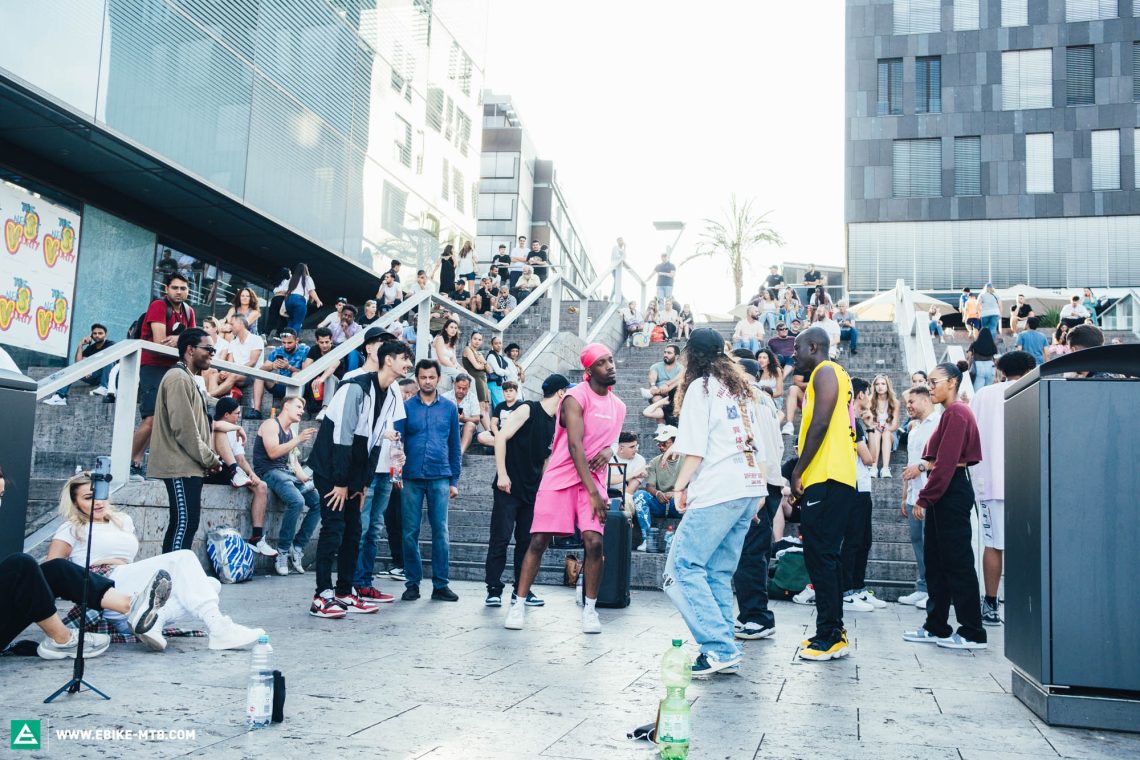
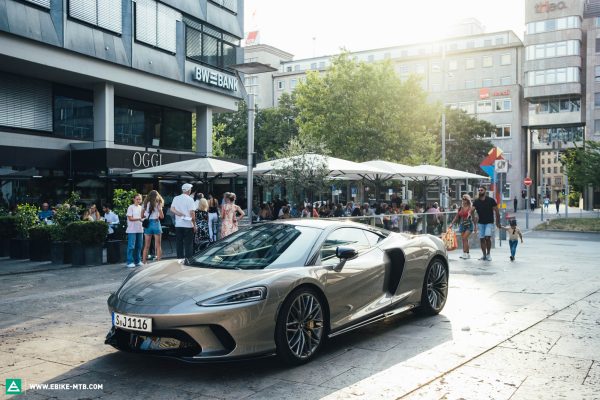
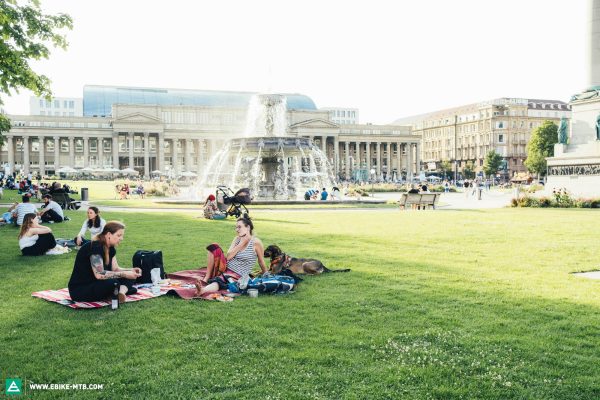
A little tip: for an excellent view over the Schlossplatz, you should definitely visit the glass Kunstmuseum (art museum). However, don’t just go for the view, but treat yourself to one of the many interesting exhibitions with changing themes from Otto Dix to virtual reality. If you’re there in the summer, we also recommend visiting the “Palast”, full name: Palast der Republik (Palace of the Republic). Here, you’ll find half of Stuttgart lounging on benches, stone ledges and on the ground surrounding a former outhouse that was named after the pompous Palace of the Republic in Berlin as a parody. It also housed parliament during GDR times. The fact that people meet at an outhouse, of all places, in a city as privileged and wealthy as Stuttgart, says a lot. At moments like these, Stuttgart simply doesn’t take itself too seriously.
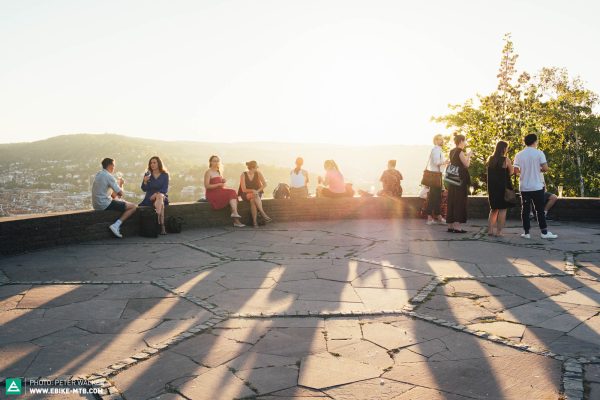

Stuffy, stingy, aloof? At the end of the day, it’s safe to say that the city of Stuttgart is far better than its reputation. It has a lot going for it! However, it’s a BYO city – you’ve got to bring your own to make the most of it. Bring your own bike, fun and ideas. And when you do, enjoy the freedoms that this city on the Neckar can offer everyone, but also enjoy its many traditions – whether it’s sweeping out the corridor, horsepower, dumplings, wine or pretzels.
5/6 Escape sssentials
Hotels, bars, restaurants, dos and don’ts in Stuttgart

Bike shops
Radsport Mayer Stuttgart
Where? Heilbronner Str. 389 | 70469 Stuttgart
Web radsport-mayer.de
Bikes’n Boards Stuttgart
Where? Tübinger Str. 53 | 70178 Stuttgart
Web bikesnboards.de
Where is the best place to sleep in Stuttgart?
Das Edith Hotel
Where? Heusteigstraße 34 | 70180 Stuttgart
Web dasedith.me
EmiLu Design Hotel
Where? Nadlerstraße 4 | 70173 Stuttgart
Web emilu-hotel.com
Der Zauberlehrling
Where? Rosenstr. 38 | 70182 Stuttgart
Web zauberlehrling.de
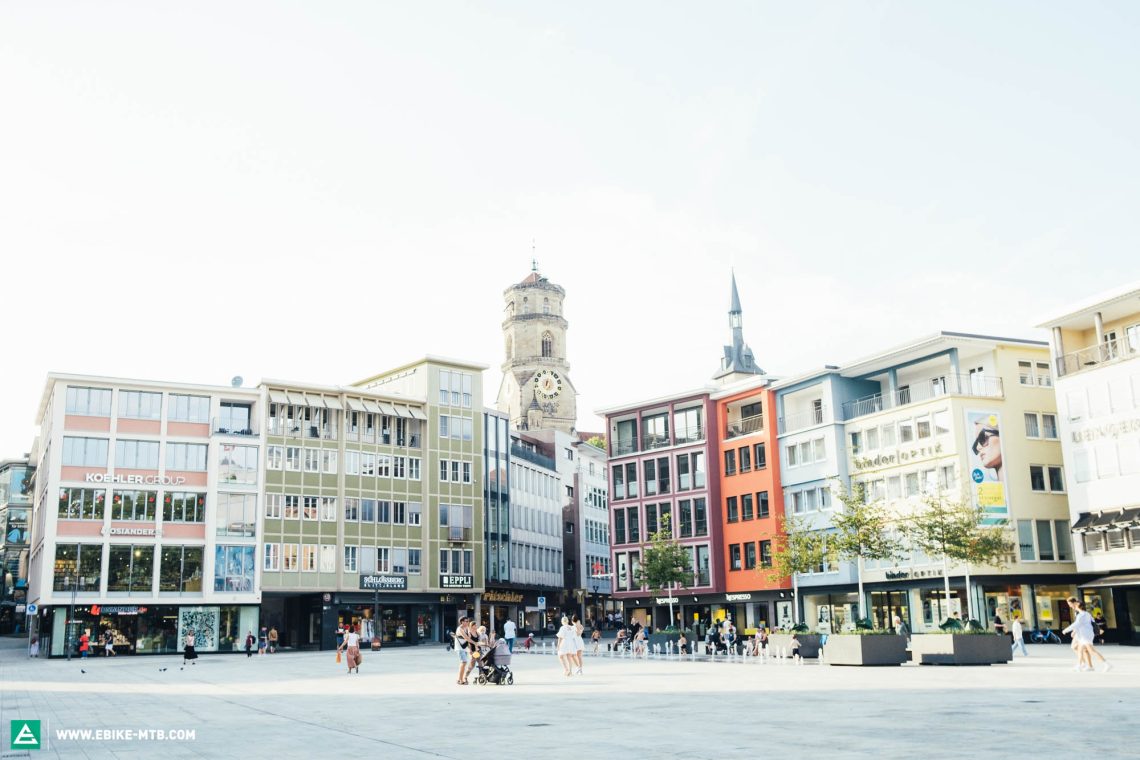
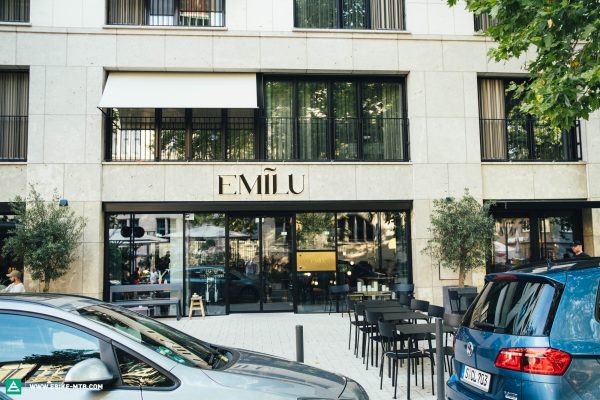

Where is the best place to eat in Stuttgart?
Weinstube Zur Kiste (Swabian Food)
Where? Kanalstraße 2 | 70182 Stuttgart
Web zur-kiste.de
N14 (Sushi)
Where? Nadlerstraße 14 | 70173 Stuttgart
Web n14-restaurant.de
YAFA (Israeli Food)
Where? Hauptstätter Straße 31 | 70173 Stuttgart
Web yafa-stuttgart.com
Vegi Stuttgart (Vegan Fast Food)
Where? Steinstraße 13 | 70173 Stuttgart
Web vegi-stuttgart.de
Speisemeisterei (2 Michelin Stars, for special occasions)
Where? Schloss Hohenheim 1b | 70599 Stuttgart
Web speisemeisterei.de
L.A. Signorina (Post-Ride-Pizza)
Where?Marienplatz 12 | 70178 Stuttgart
Web lasignorina.org
Die Metzgerei (International Food with Vegan and Vegetarian dishes)
Where? Elisabethenstraße 30 | 70197 Stuttgart
Web metzgereistuttgart.de
Fritz (Breakfast all day everyday)
Where? Nadlerstraße 4 | 70173 Stuttgart
Web fritz-str.com
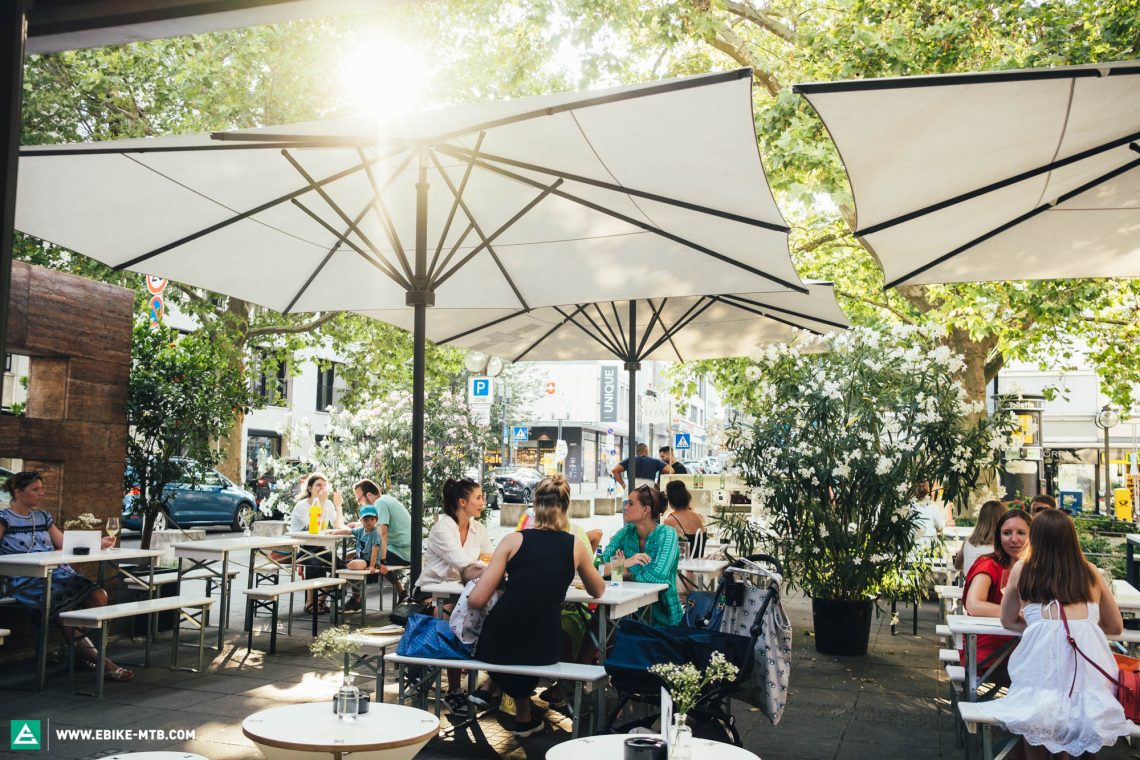
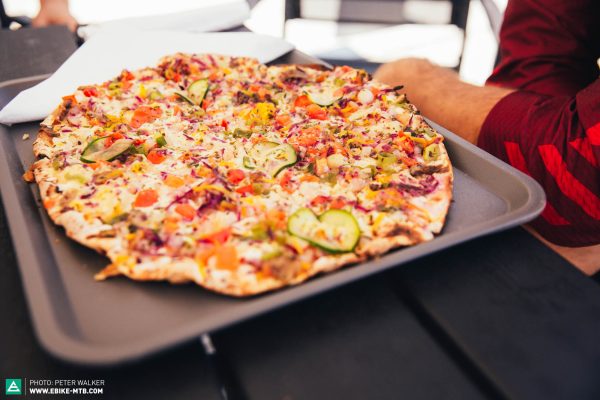
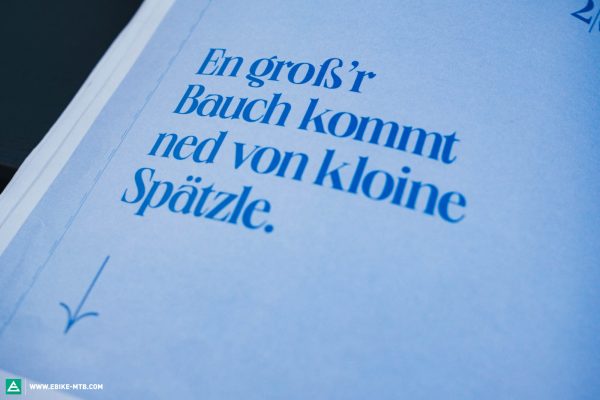
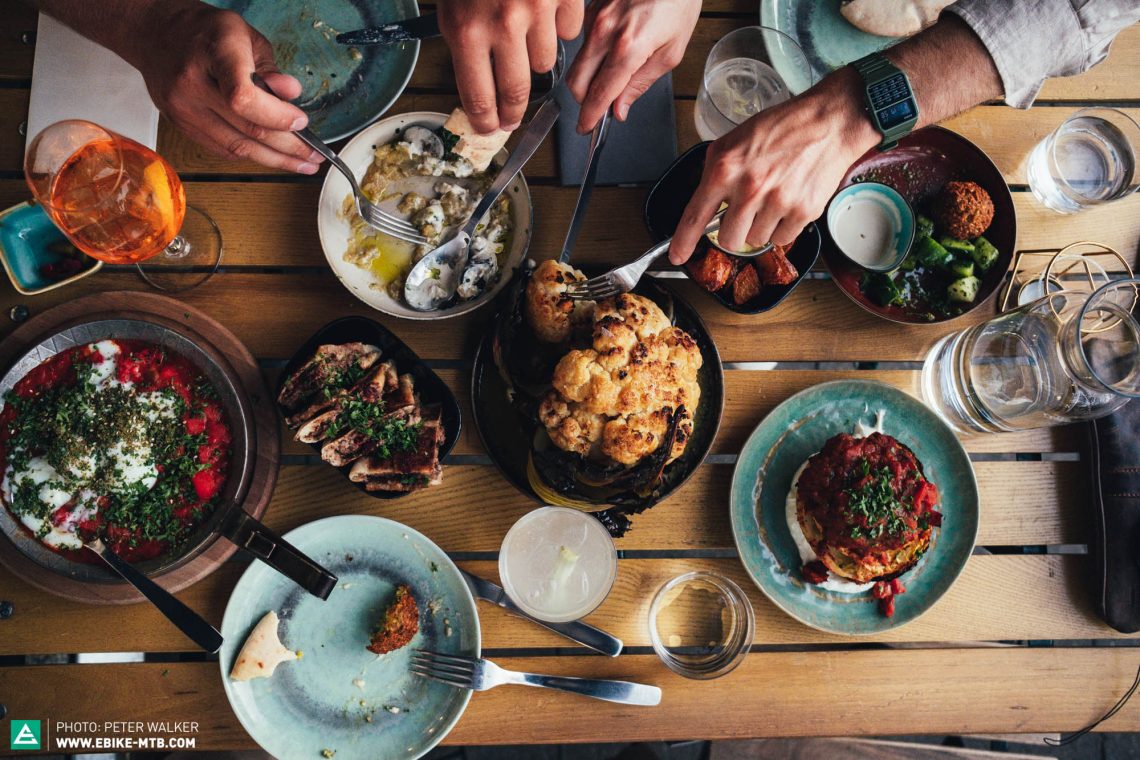
Where is the best place to drink in Stuttgart?
Coffee, “Kessler Schorle” (Stuttgart local cocktail) and wine
Tatti Café & Bar
Where? Pierre-Pflimlin-Platz 3 | 70173 Stuttgart
Web instagram.com/tatti_stay_and_see
Mókuska Kaffeerösterei (coffee roastery)
Where? Johannesstraße 34 | 70176 Stuttgart
Web mokuska-caffe.de
Fietsen Radcafé
Where? Silberburgstraße 84 | 70176 Stuttgart
Web fietsen-stuttgart.de
Teehaus im Weißenburgpark
Where? Hohenheimer Str. 119 | 70184 Stuttgart
Web teehaus-stuttgart.de
Alf Bikes & Coffee
Where? Villastraße 14 | 70190 Stuttgart
Web instagram.com/alf.stuttgart
Fritz (Breakfast all day everyday)
Where? Nadlerstraße 4 | 70173 Stuttgart
Web fritz-str.com

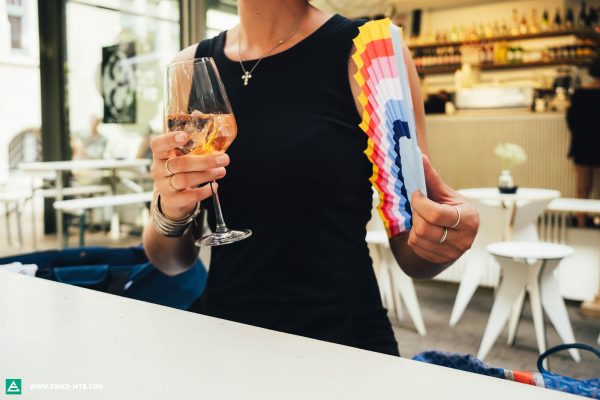

Wine & beer & cocktails
Fou Fou
Where? Leonhardstr. 13 | 70182 Stuttgart
Web bar-foufou.de
Paul & George
Where? Weberstraße 3 | 70182 Stuttgart
Web paulandgeorge.de
Botanical Affairs
Where? Weberstraße 10 | 70182 Stuttgart
Web instagram.com/botanicalaffairsstuttgart
Palast der Republik
Where? Friedrichstraße 27 | 70174 Stuttgart
Web facebook.com/PalastStuttgart
Schwarz Weiß Bar
Where? Wilhelmstraße 8a | 70182 Stuttgart
Web schwarz-weiss-bar.de


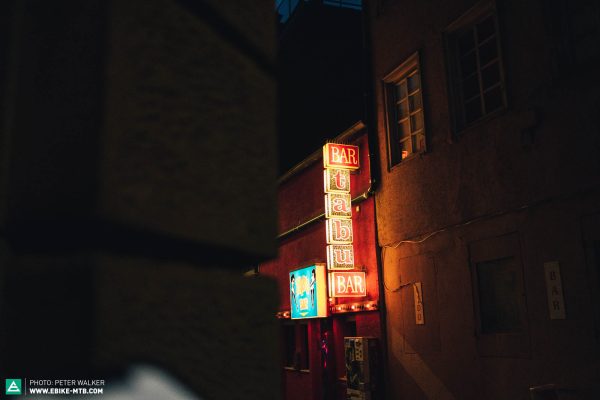
Dos
- go biking (obviously!)
- take a city tour along the Neckar
- keep to the speed limit (lots of speed cameras)
- meet with friends at the Schlossplatz
- enjoy the views (Solitude Castle/Monte Scherbelino/Weißenburgpark viewpoint/TV Tower)
- visit the highly Instagramable city library
- visit the art museum at the Schlossplatz and enjoy the view from there
- drink a beer at the Kultur Kiosk
- get a falafel pita to go from Vegi
- end every word with -lè
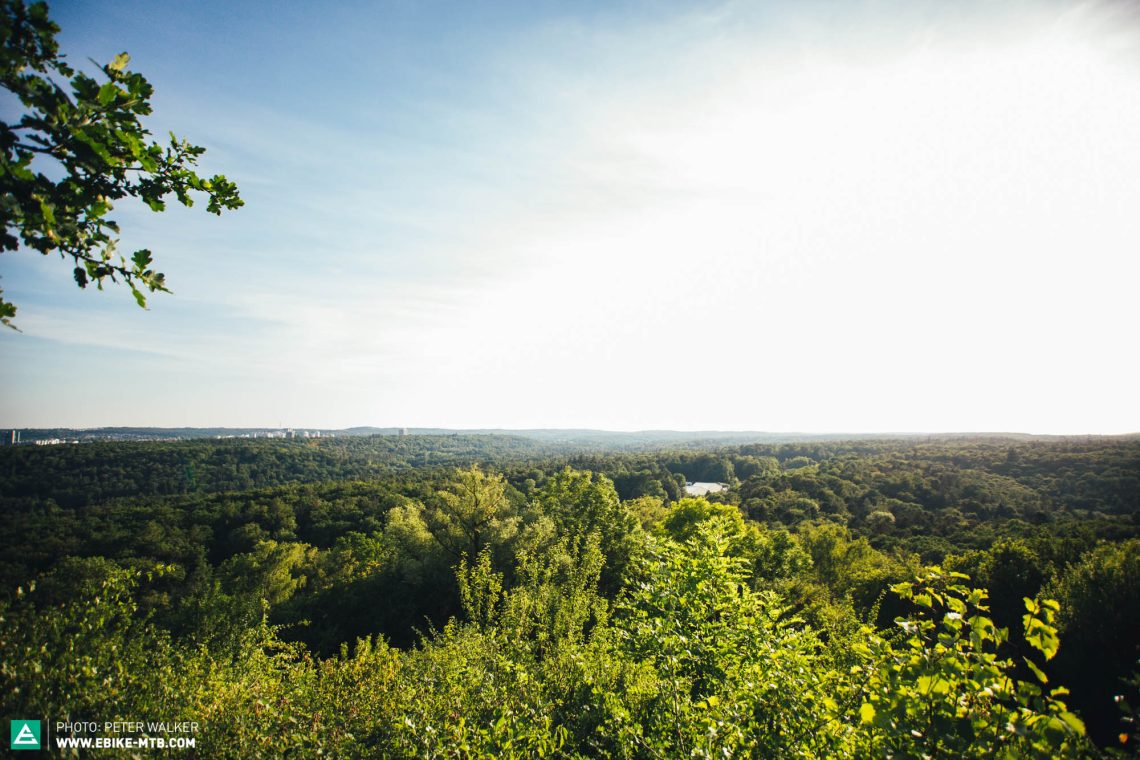

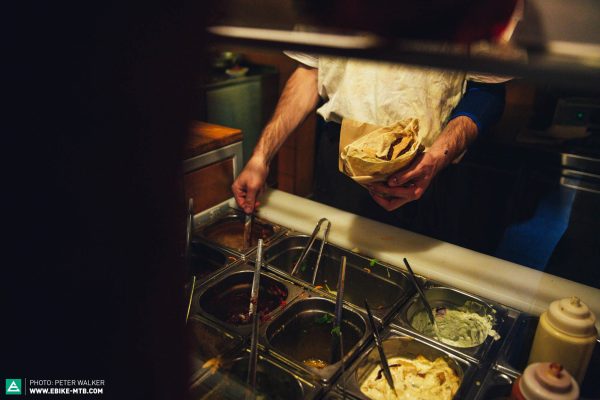

Dont’s
- fail to comply with sweeping week
- get caught by the forester because of the 2-metre rule (a law from 1995 banning bikes from forest paths narrower than 2 metres)
- take your old, exhaust fume-spewing van into the city centre (environmental zone)
- get too close to the swans on the Feuersee lake (but you’ll also find turtles there!)
- attempt the Hasenbergsteige climb on an analogue bike
- line up at the Louis Vuitton shop (embarrassing)
- look forward to perfect bike infrastructure or continuous bike paths (unfortunately)
- discuss Stuttgart 21
- believe the prejudices
- pose in front of a Porsche like Kanye West (or is it Ye?)


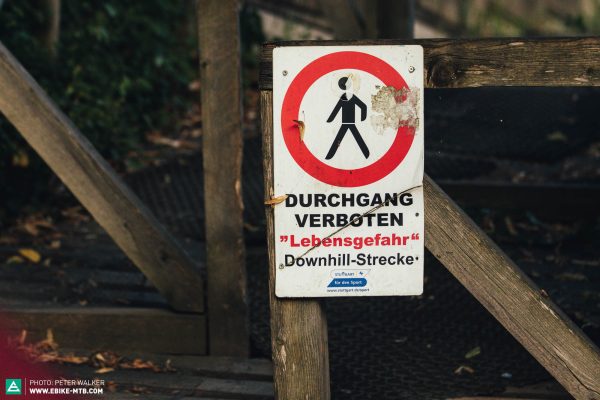
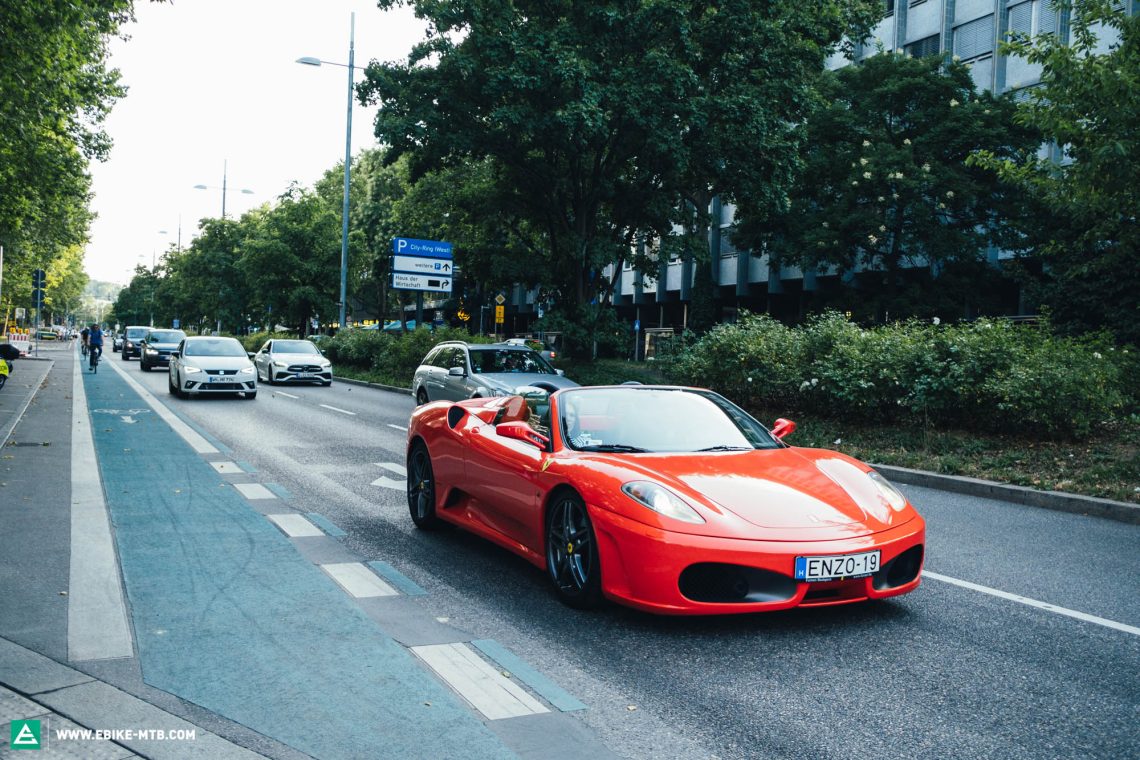
An attempt to decipher the Swabian dialect
Okay, this will get more complicated than nuclear fission. A tip in advance: Swabians are a frugal bunch. They simply omit unnecessary syllables, letters and whole words and will occasionally repurpose the same word for different meanings. In turn, they use the time saved to extend a few words with “lè” or to confirm them with a ha. They add emphasis wherever they like, just not where it should be, and relative pronouns are replaced by “wo” (where), regardless of gender. Ah, and beware, they always turn an “s” into a “sh”.
A few examples:
- obe – oben (top)
- unde – unten (bottom)
- oagnehm – unangenehm (unpleasant)
- Regä – Regen (rain)
- i – ich (I)
- heben – halten (hold)
- heben – heben (lift)
- Flegga – Dorf (village)
- Flegge – Flecken (stains)
- schaffen – etwas schaffen, hinkriegen (to do something)
- schaffen – arbeiten (to work)
- trinkä – trinken (to drink)
- ässe – essen (to eat)
- gwä – gewesen (was)
- Machmor! – Machen wir! (we’ll do [it])
- Machetze – Machen Sie (you/they’ll do [it])
- gäschtern – gestern (yesterday)
- Heisle – Haus (house)
- Bürro – Büro (office)
- Das Fahrrad, wo… (the bicycle, where…) – Das Fahrrad, das … (the bicycle, that…)
- Weischt … – Weißt du … (you know)
- ha jo – ja (yes)
- Gsälz – Marmelade (jam)
- Grombira – Kartoffeln (potato)
- alde Bix – alte Frau (old woman)
- Besen (broom) – saisonal geöffnete Weinausschankbetriebe (seasonal wine bar)
- Viertele – Viertel Wein (a quart of wine)
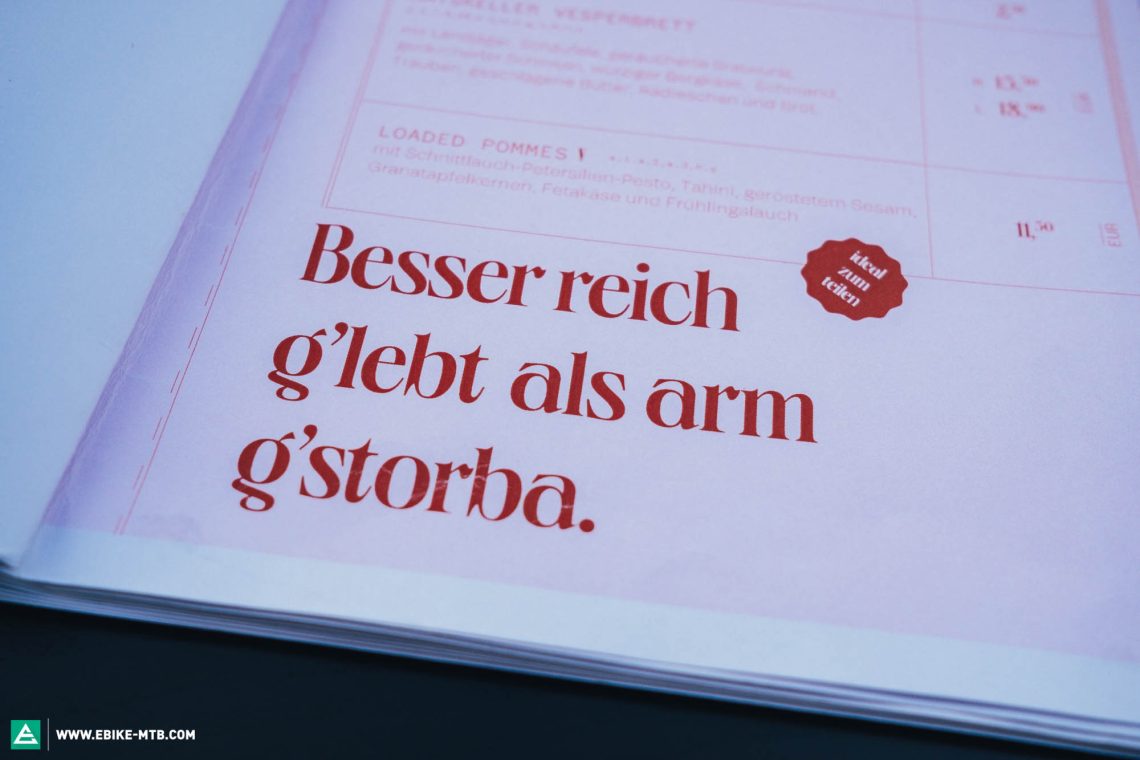
6/6 Escape faster
Our Stuttgart rides in detail
The Haibike AllMtn CF SE
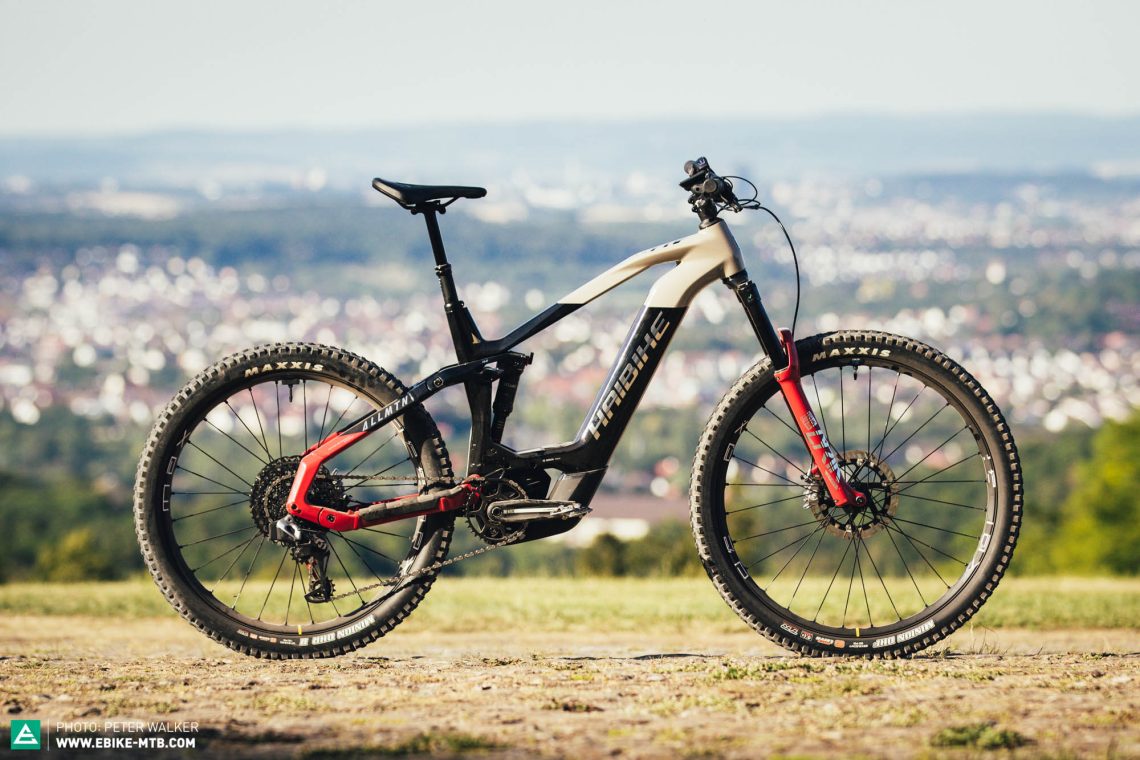
€ 8,799 | Manufacturer’s website
The Haibike AllMtn CF SE doesn’t correspond to the cliché of the stuffy Swabian. It’s aimed at fun-seeking ebikers who want to rock the trails both up and downhill. With a mixed wheel setup consisting of 29” wheel up front and a 27.5” on the rear, 160 mm travel RockShox controlled suspension at the rear and a high-end Lyrik Ultimate fork, it ticks all the right boxes to do so. The powerful and finely tuned Bosch Performance Line CX Smart System motor delivers 85 Nm of torque, offering carefully modulated assistance no matter how steep the climbs. To accommodate the large 750 Wh battery in the down tube, the motor has been rotated upwards inside the carbon frame, which is one of Haibike’s signature features. With its beefy proportions and square lines, the AllMtn CF SE is unmistakably a Haibike. Unusual for Haibike, on the other hand, is that only the cranks and grips are supplied in house. This time, its Race Face providing the handlebar, seat post and stem. For the shifting and braking, Haibike have reached for the top shelves of SRAM and MAGURA. The electronic SRAM Eagle X01 AXS derailleur shifts gears wirelessly and the MAGURA MT7 four-piston brakes provide the necessary stopping power.

Admittedly, the powerful Performance Line CX Smart System motor was developed in neighbouring Reutlingen, but Bosch themselves are as synonymous with Stuttgart as Porsche, Daimler and Spätzle.
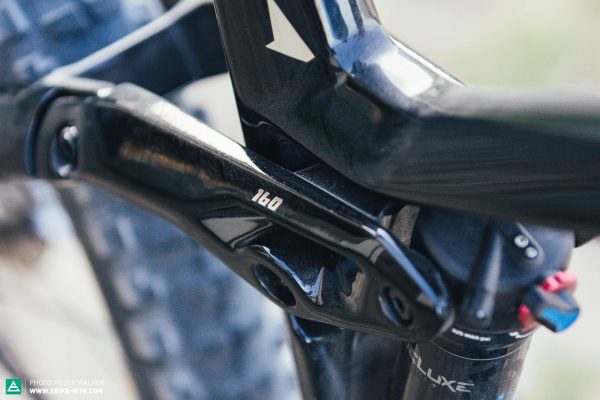
With 160 mm travel, the Haibike AllMtn is more than capable enough for all the trails around the Baden-Württemberg capital.
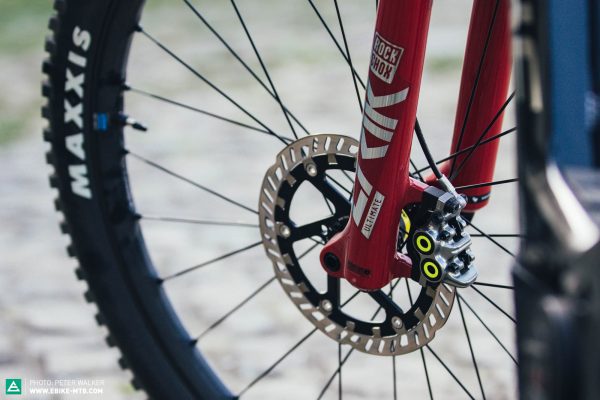
The MAGURA MT7 four-piston brakes and two-part MDR-P rotors provide all the braking power. With their headquarters at the foot of the Swabian Jura in Bad Urach, brake specialists MAGURA are just a stone’s throw from Stuttgart.
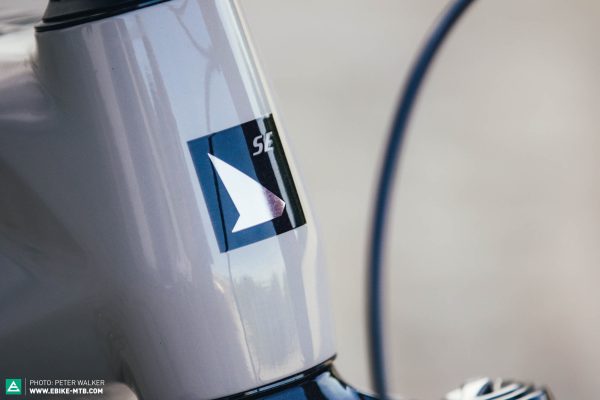
The main frame of the AllMtn CF SE is made of carbon and embodies Haibike’s characteristic design language.
The Haibike LYKE 11
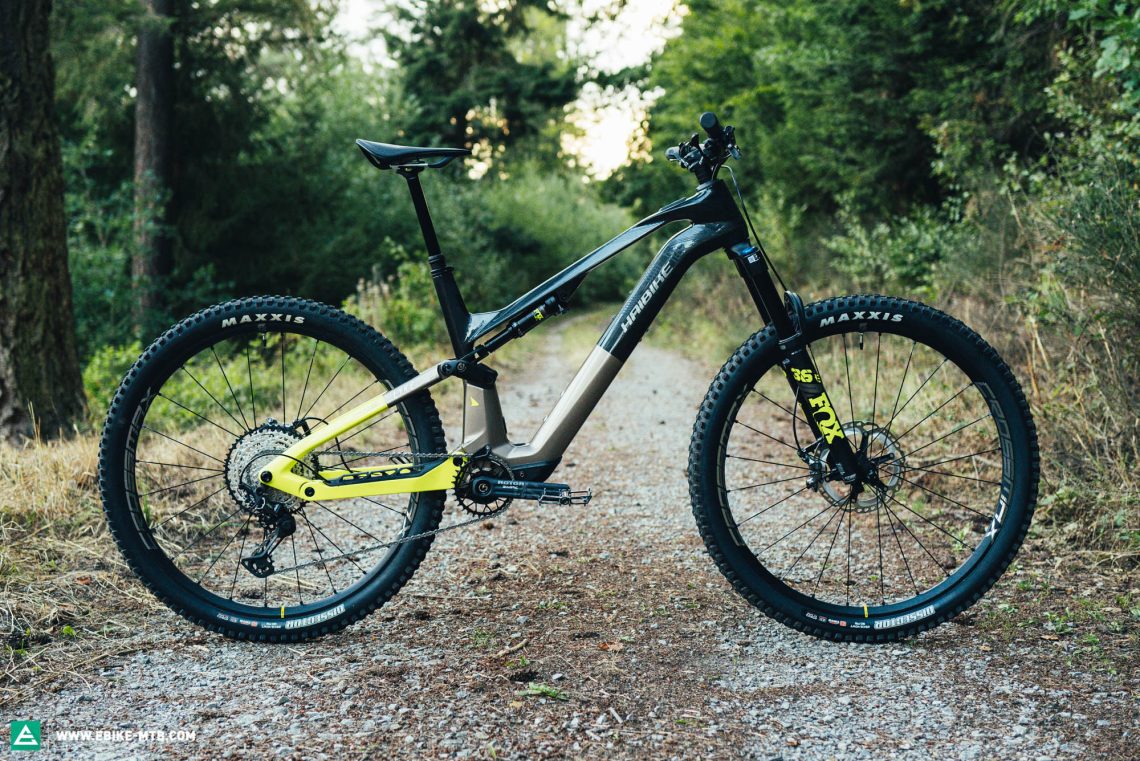
Manufacturer’s website
Haibike are breaking new ground with the LYKE 11. Without a doubt, the German brand’s first light eMTB is an unusual sight for the tradition-loving Swabians, though not at all unpleasant. To make it look like a sporty analogue bike, Haibike’s developers decided to do away with many of the stylistic elements from their previous range of ebikes. For the first time, the Fox float DPS shock is installed horizontally instead of vertically in the frame. The down tube is nice and slender. Tucked away inside it is the removable 430 Wh battery. But instead of a large battery opening in the bottom of the downtube and the Modular Rail System on the top, the down tube remains completely intact. Even looking at the bottom bracket area, it’s hard to distinguish the LYKE from an analogue bike. This is mainly due to the fact that the compact FAZUA Ride 60 motor has been integrated vertically inside the seat tube. With its relatively moderate torque output of 60 Nm, it contributes to the natural ride feel of the LYKE 11. The remaining specs also hit the sweet spot of an agile and lively eMTB: 29” tires, 140 mm travel front and rear, and that at a total weight of just 18.8 kg in size L. #THEFREEDOMOFLIGHT

The compact FAZUA Ride 60 motor has been integrated vertically inside the seat tube. It provides a natural ride feel, but with 60 Nm of torque it still offers enough support to take the sting out of long climbs.
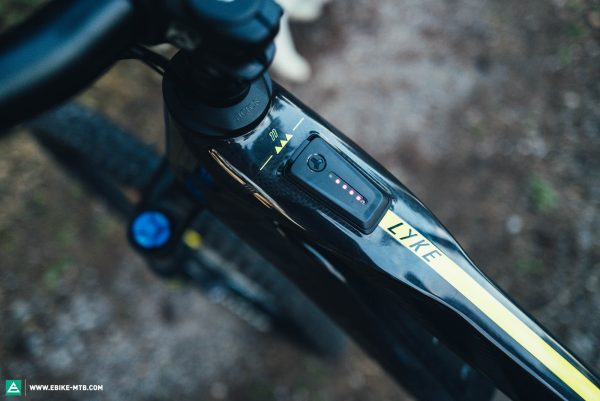
The FAZUA led hub is discreetly integrated into the top tube and provides all the basic information via 5 colour LEDs. If you’re looking for more infotainment, you can pair the LYKE 11 with the FAZUA app on your smartphone. Thanks to the hidden USB-C port under the display, you can even charge your smartphone on the fly.
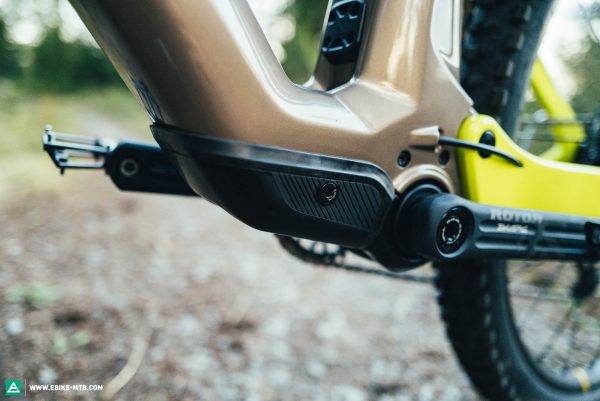
There is no motor in front of the bottom bracket! As such, the 430 Wh battery can just slide out of the downtube of the LYKE 11 without the need for a big opening.
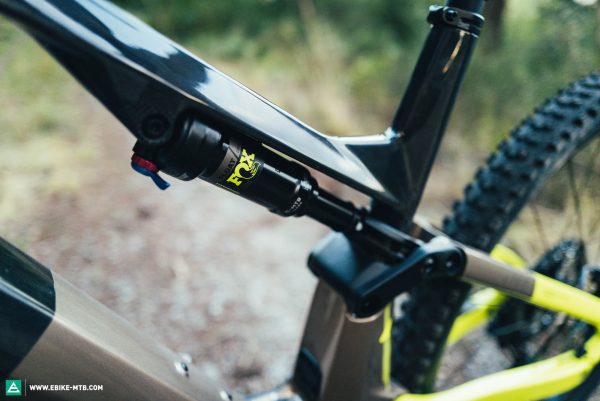
As far as we know, this is the first time that the shock is positioned horizontally on a Haibike. It delivers 140 mm travel at the rear, matching that of the FOX 36 Performance fork up front.
Fancy a tour through Barcelona, Zurich, Vienna, Lisbon, Frankfurt or Berlin? You can find our previous E-MOUNTAINBIKE City Escapes and lots of insider tips and insights into each of the cities we’ve visited here.
Did you enjoy this article? If so, we would be stoked if you decide to support us with a monthly contribution. By becoming a supporter of E-MOUNTAINBIKE, you will help secure a sustainable future for high-quality cycling journalism. Click here to learn more.
Words: Julian Lemme Photos: Peter Walker / Julian Lemme / Robin Schmitt









